Project Tag: Residential
Polk Plaza
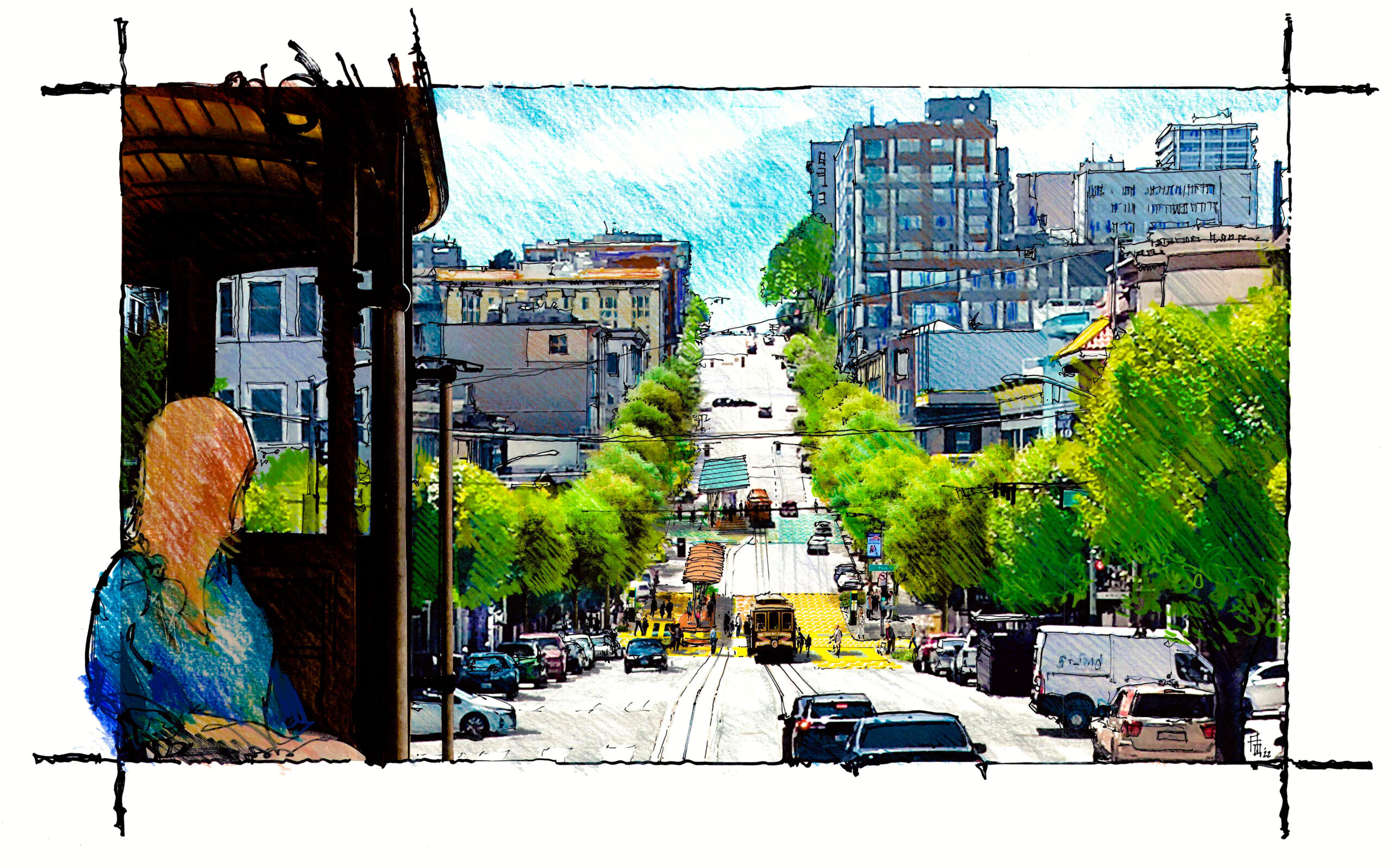
Grass Roots Urbanism
The culmination of many community-focused design workshops, and stakeholder input, that created the California Cable Car Turn-Around Vision Plan ignited the formation of a separate group committed to seeing this area become the gateway to the Polk Street mercantile corridor. The idea of creating a more formalized pedestrian focused transit node, away from the busy Van Nes corridor, here at the Polk intersection was the starting point for the Polk Plaza Vision

A New Cable Car Social Hub
Working with the growing group of “friends” of Polk-Plaza, INTERSTICE was asked to create an addendum to the original vision plan that focused on the Polk intersection cable car stop, with its obvious connections to the community, and to the heritage of San Francisco’s iconic cable car past. The intersection is envisioned to serve as the gateway to the city’s western center – With widened sidewalks, bulbed curbs, street amenities and plantings at the four corners, the intersection at California street forms a larger hub connecting the bike lanes, and personal mobility routes to this very walkable neighborhood, with its heritage merchants, eateries and lively bars, that characterize this thriving Polk Gulch neighborhood.
From this new activated area, visitors and locals are just steps away from Nob Hill, Russian Hill, Cathedral Hill, Civic Center and the Tenderloin neighborhoods – so, it seemed the natural place to envision a lively orientation point at the western most terminus of the Cable car system.
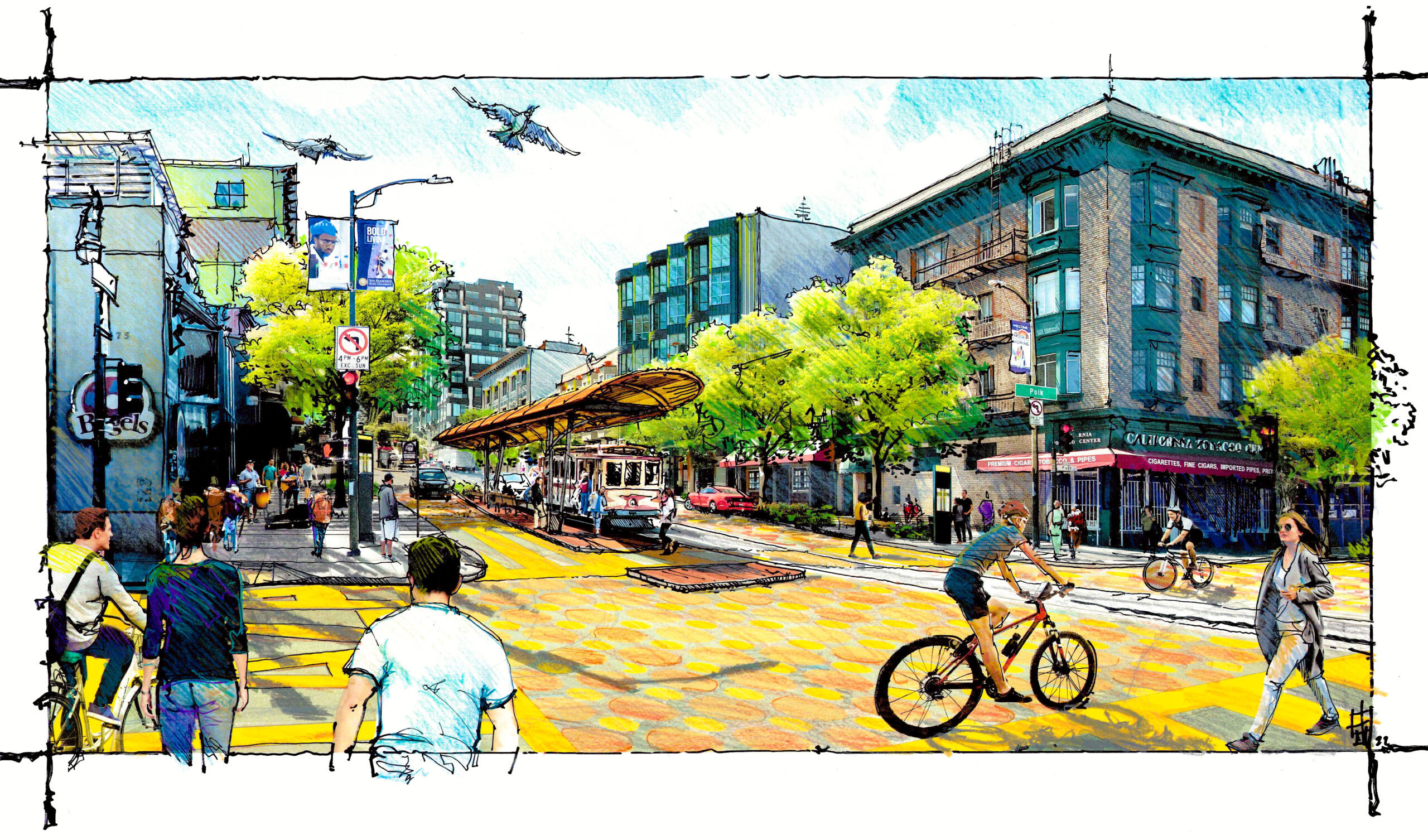
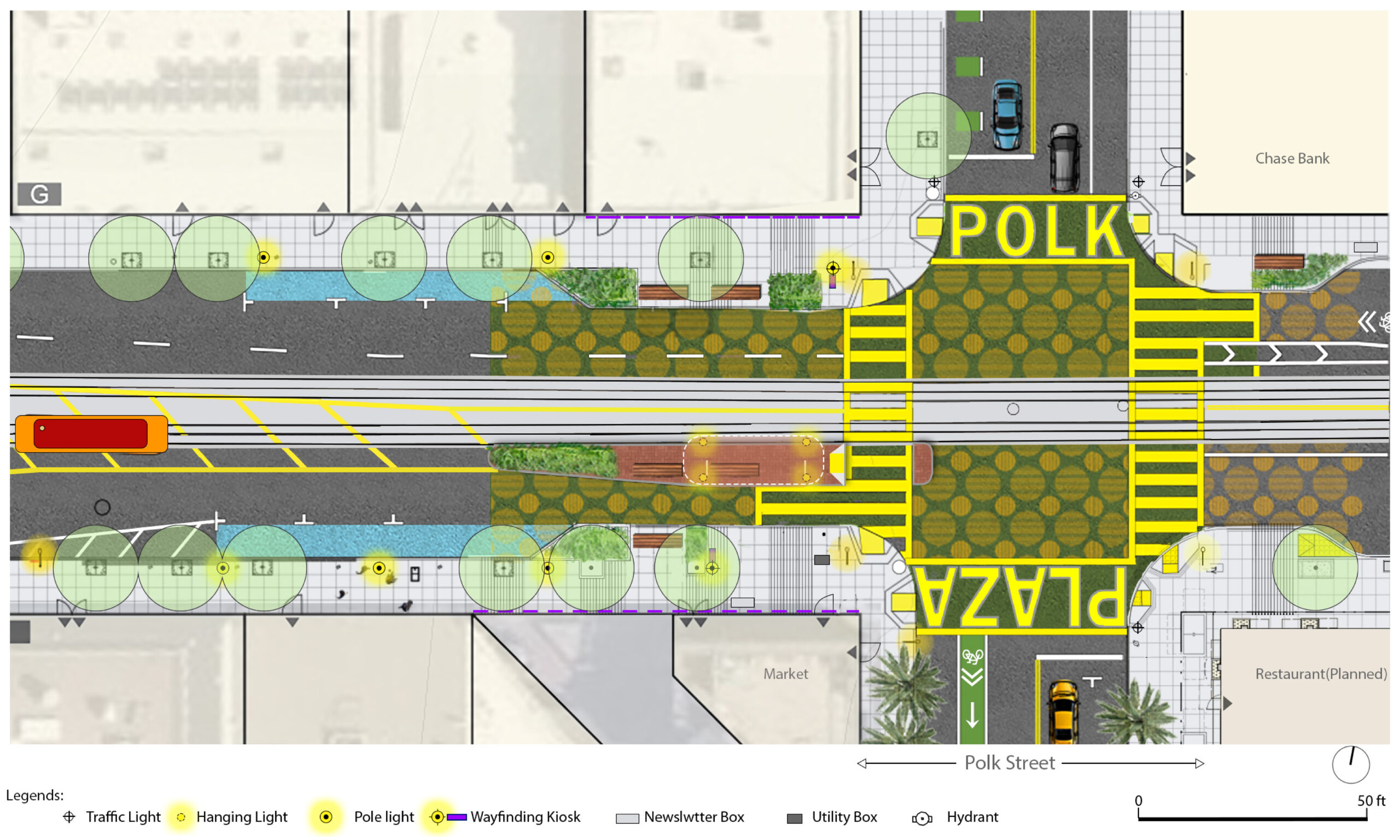
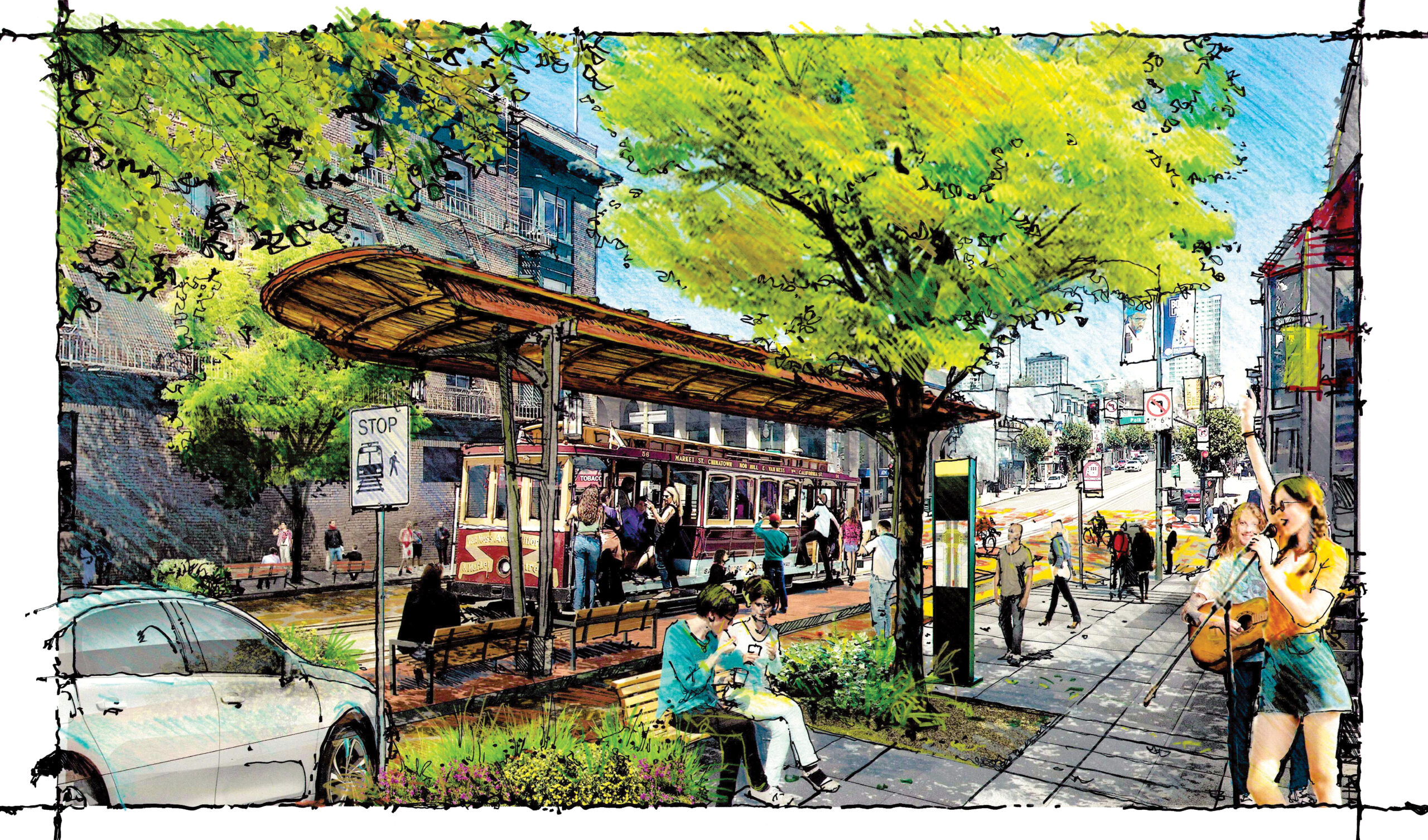
Focusing Community
Here Street musicians would serenade the waiting commuters, the passing shoppers, and the tourists on their elevated journey over the hills – to and from the Embarcadero and Chinatown. The plan imagines a redesigned civic space that makes people welcome and provides opportunity for interpretive signage, wayfinding , and musical programming from the nearby Music City Studios and hotel. The entire Vision plan can be found here – with the Polk Plaza addendum published here as a standalone document.
Join the friends of Polk Plaza and the Polk Corridor Neighbors as we continue to work on the best public commons for our San Francisco neighborhood.
Location: California and Polk Streets, San Francisco.
Client: Lower Polk CBD and Friends of Polk Plaza
Scope: Urban Design
Status: Vision Plan
Vallejo Street Residence
Expanding Into the Outdoors
A home in the Pacific Heights neighborhood of San Francisco expands to create a garden connector, allowing a realigned kitchen to become the conduit between the original formal dining room and a new informal family room that opens out onto a transformed garden—extending the home outdoors.
Home and Garden
This elegant, historic Dutch-style home in San Francisco was in need of a better connection to its garden, an under-used and difficult-to-negotiate rear yard. INTERSTICE Architects knew the solution was both architectural and landscape-focused. It was a question of reconfiguration of both the kitchen and its awkward relationship to the steeply sloped site, which had limited the gardens usability for decades. The home was expanded and dug out to create new space at the lower level, while allowing the yard to establish a continuous relationship to the main living floor. The interiors were realigned to establish the kitchen as a connecting social space between the new informal, private family room, while the exterior garden was remade to be a clearly articulated extension of the social and entertainment level of the home.
Shaping the “Smart-Wall”
A full height cabinet “smart-wall” inside the residence epitomizes the key aspect of this project: the integration of spaces. This smart-wall establishes a material transition between the kitchen—where it acts as a storage and shelving wall—into the family room. From this living space, the design transforms, containing a new hearth, skylight, and entertainment center, before moving all the way through to the garden patio window wall—where it thickens to conceal a secret, private full bathroom.
Framed by Wood
Outside, the landscape is restructured from three unusable levels into a spacious two-level terraced garden. The living level provides a patio deck beyond the dynamic glass wall of the family room for exterior dining. An in-wall fountain anchors one end, along with a wood clad raised sun garden and a cozy fireplace, all framed by the warmth of wood and dark, smooth concrete. Together these materials form a seat back that wraps the retaining walls and connects the more remote and private upper garden level. The upper garden is set on a wood clad deck with a sunken hot tub, an outdoor shower, and a hammock, all sheltered by deep plantings and mature tree ferns.
Natural as the Counterpoint
The predominance of natural exposed materials permeates the garden and the interior palette, allowing for a more sensual counterpoint from the rest of the formal and more traditional home. Warm materials and discreet lighting create an inviting and pleasant night presence, while communicating an easy comfort as the home dissolves from interior to outdoors across the expansive glass facade. Festoon lights above and a spiral stair to the upstairs extended green garden roof improve the second level private studio.
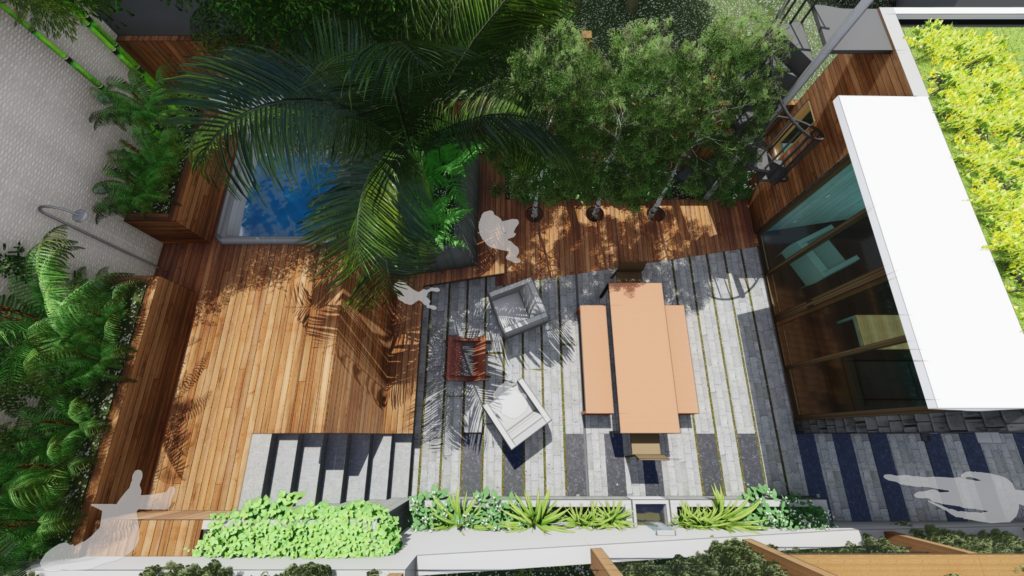
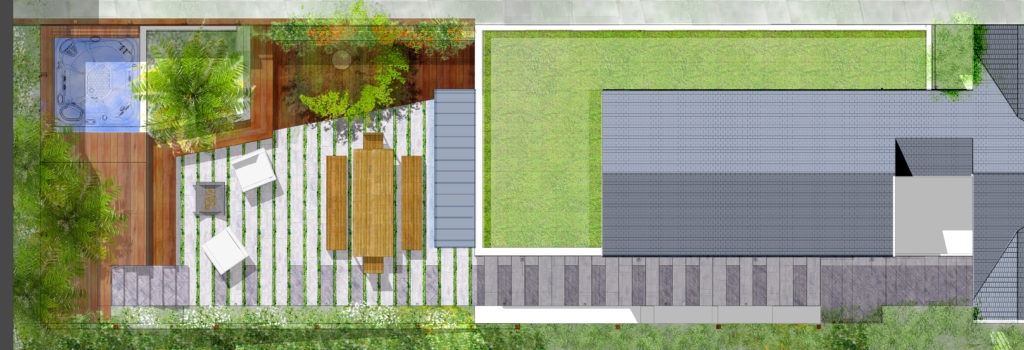
Bringing Light Down
INTERSTICE designed the kitchen and light-well as a light-emitting garden column planted with tree bamboo. This space was particularly meant to bring light down into the new, lower media and guest room, excavated to host service spaces including an independent laundry room and full bath that allows for connection or full separation from the home office level below, and for the owners to enjoy increased privacy.
Location: Vallejo Street, Pacific Heights, San Francisco.
Owner/Client: Undisclosed
Scope: Residential Renovation & Garden Design
Status: Completed 2020
Photography: Cesar Rubio
1567 California Street

A Central Oasis
The busy intersection of California and Polk Streets is the north gate of the Polk Alleyways District, which punctuates the westernmost cable car stop in San Francisco. The landscape designed by INTERSTICE Architects complements this new, thoughtfully conceived building by David Baker. A multifamily unit residence creates our neighborhood canvas for a spacious new corner streetscape, while providing a new festoon lit alleyway access off of Polk Street that leads into a semi-private courtyard: an oasis at the center of the project.
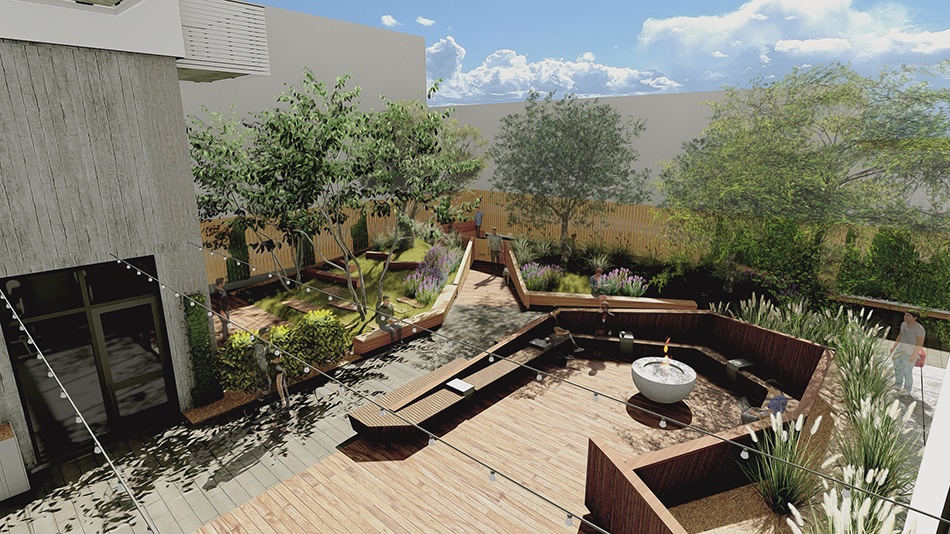
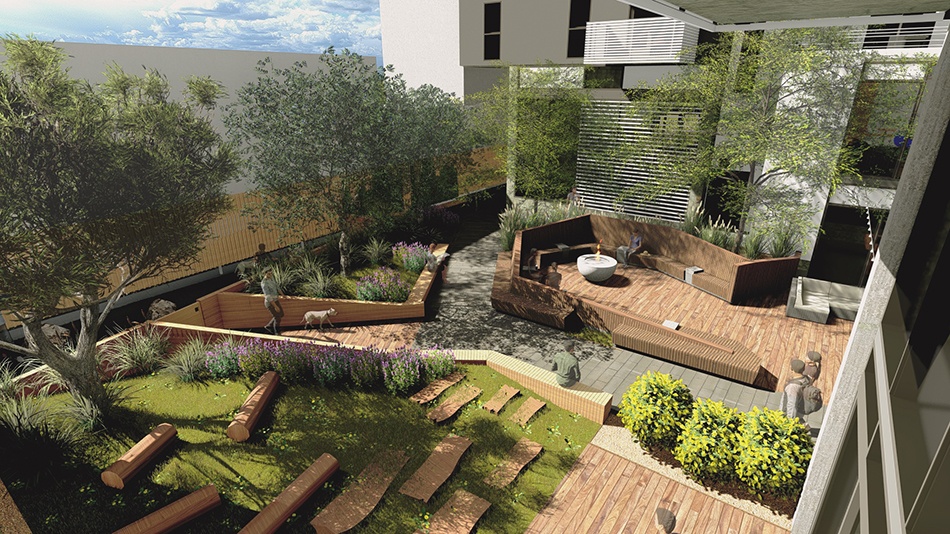
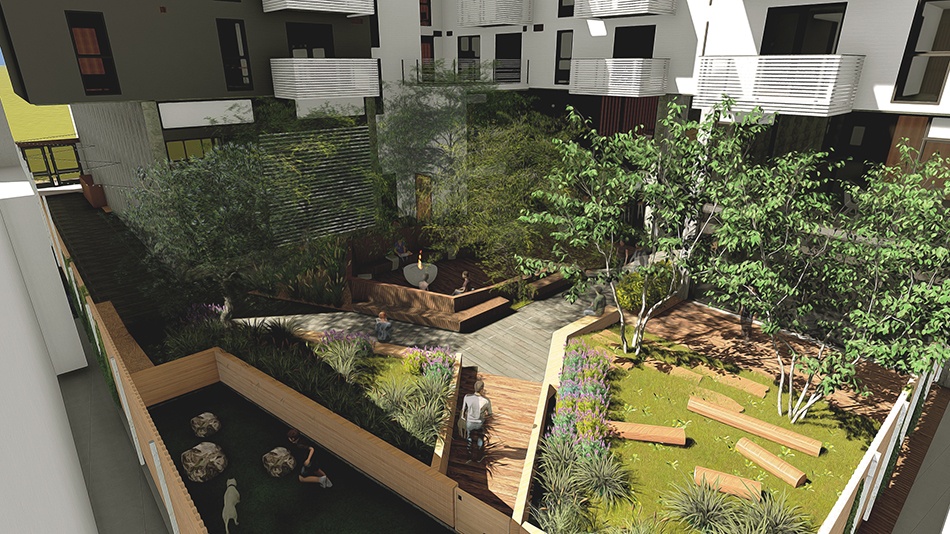
Unfolding Organization
The courtyard is a pinwheel of programs designed around a central, nest-like intimate seating element. Around this custom wood enclosure, which undulates and unfolds under a grove of deciduous trees, are organized an exterior living room space, a restaurant view-scape, a yoga studio deck, and a mini dog-run for the building’s pets. The court connects the two entry levels on this sloped site from California and Polk Streets along a second planted exterior pathway. This path ascends from the inner court though an open air atrium up a planted stairwell to reach the California Street lobby paseo.
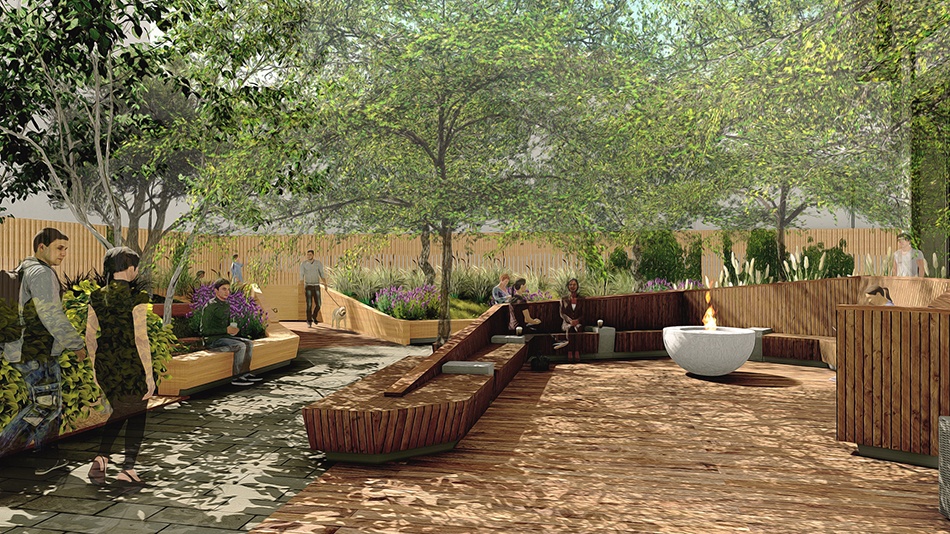
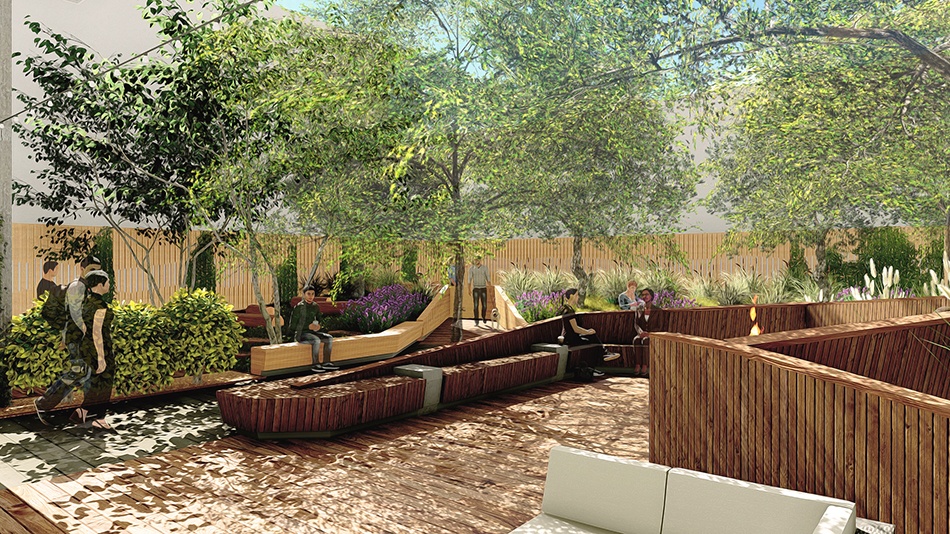
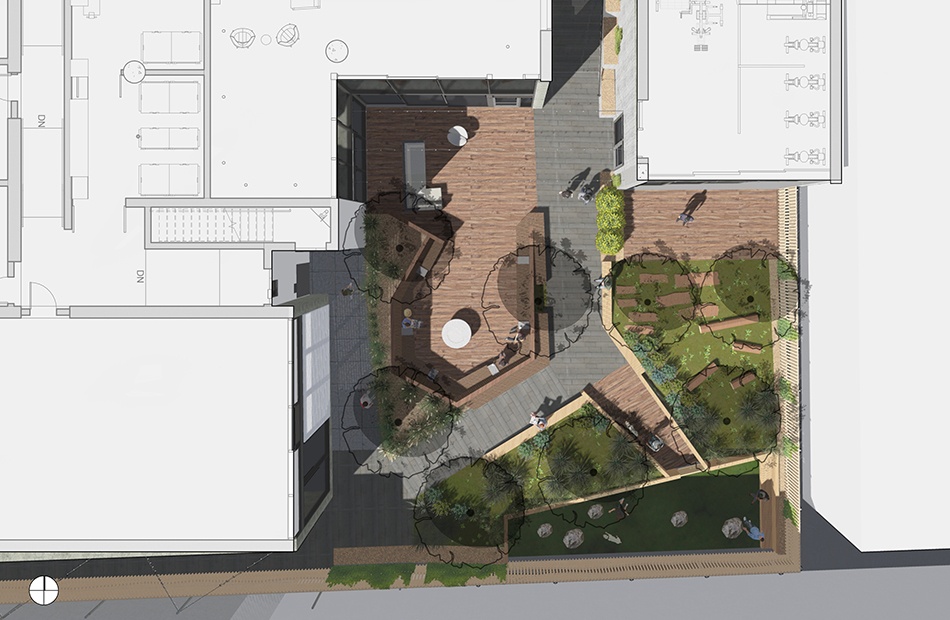
Green Meanders
Along the wire structures, vines climb to provide privacy and vertical green walls throughout the enfilade spaces. Alongside this green space, cut logs become pavers that lead the eye into the lushly planted areas meant to allow a more intimate, slow access to the courtyard complex, whether enjoying a brief pause in the space or meandering along the pathways. The grove’s shaded nest is both a furnishing and social concentrator: residents can choose to perch solitarily, or join in small groups. This quiet open space is perfect for imaginative play by the younger members of the extended housing community.
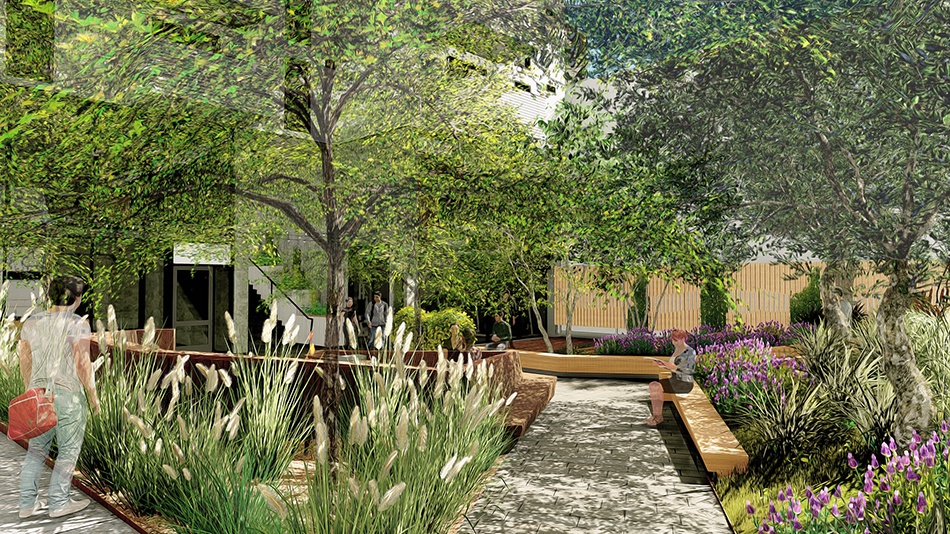
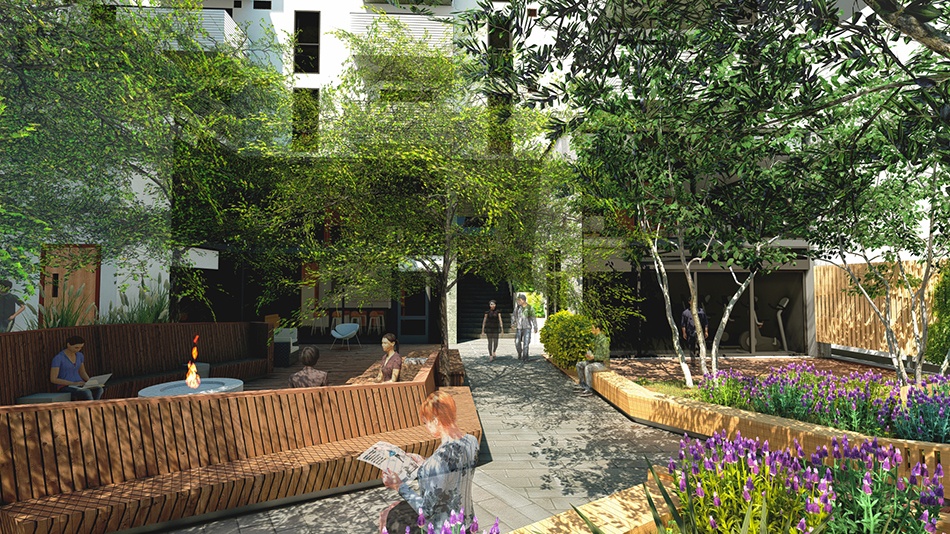
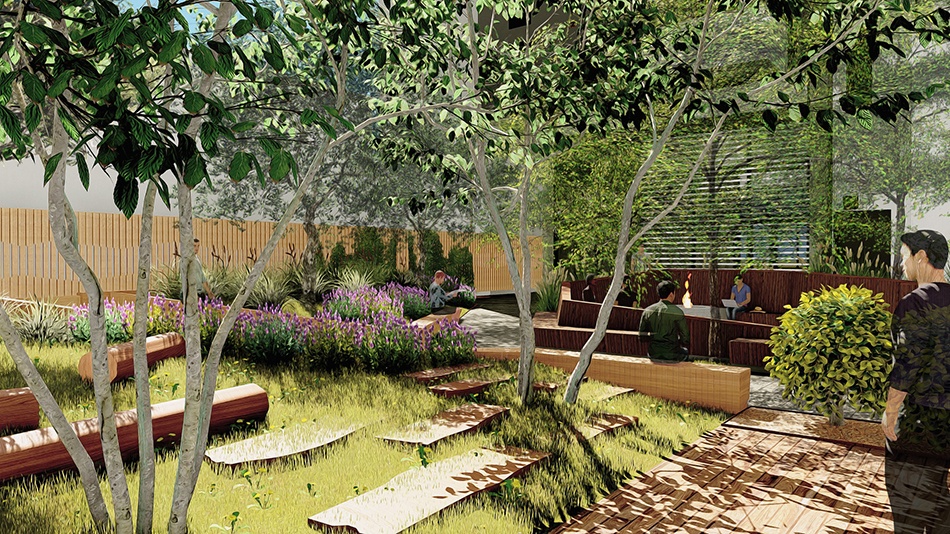
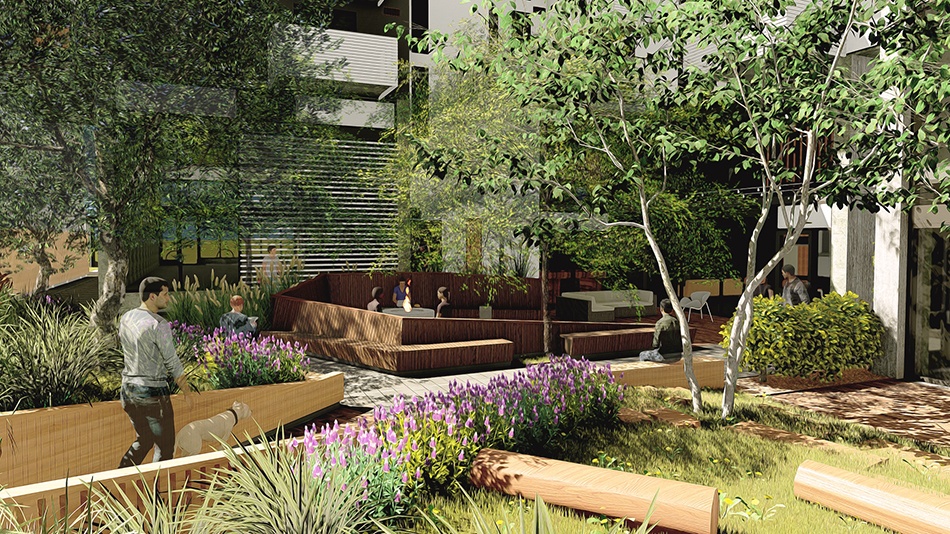
Garden Respite
This densely populated area of San Francisco is in desperate need of more green spaces. The 1567 California Street project offers a lushly intimate, park-like court that is a welcome respite from the bustling mercantile corridor just beyond the new housing project. Like a miniature Tivoli Gardens, it provides material richness and after-hours lighting to allow for an extended use into even the darkest seasons for its diverse community to enjoy throughout the year.
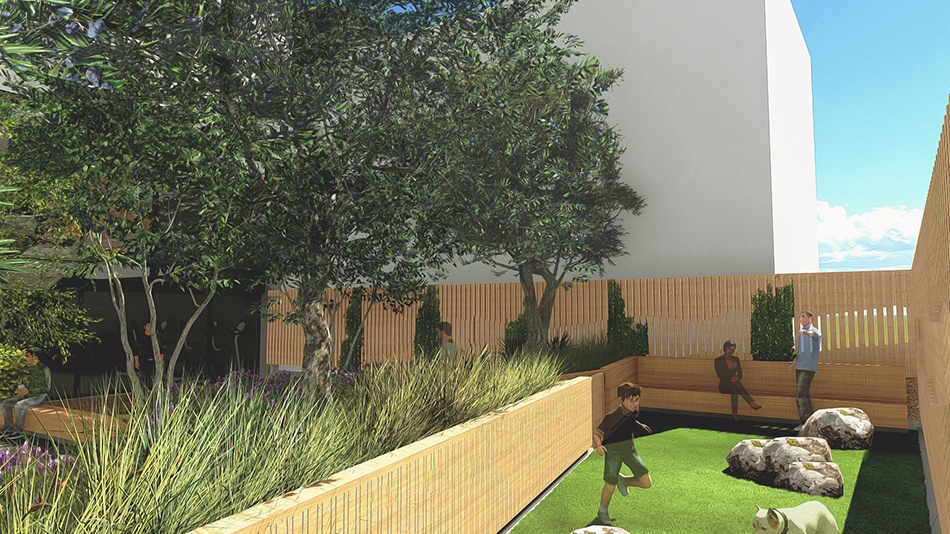
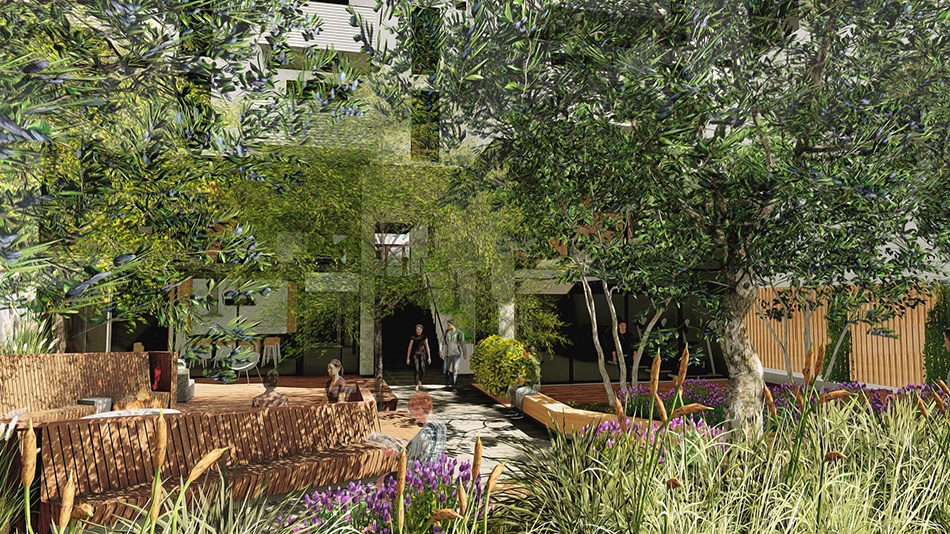
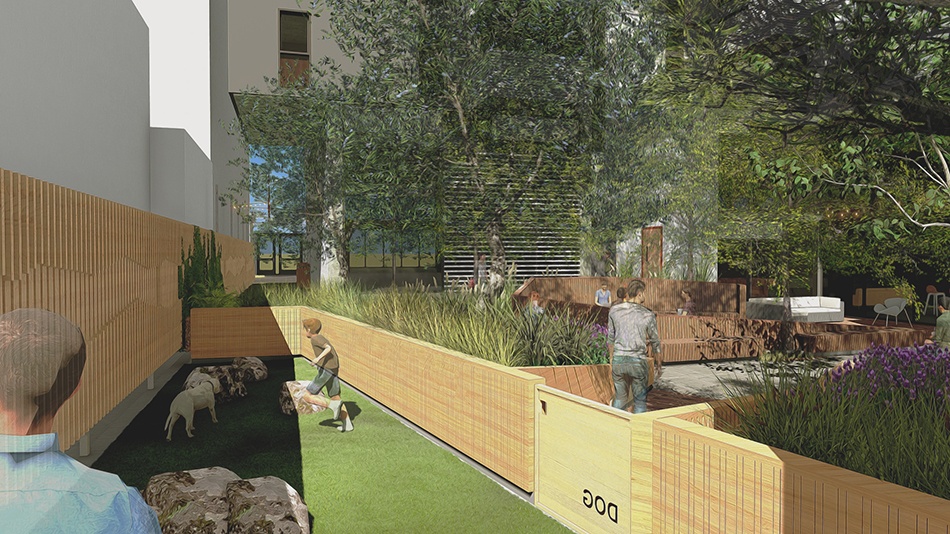
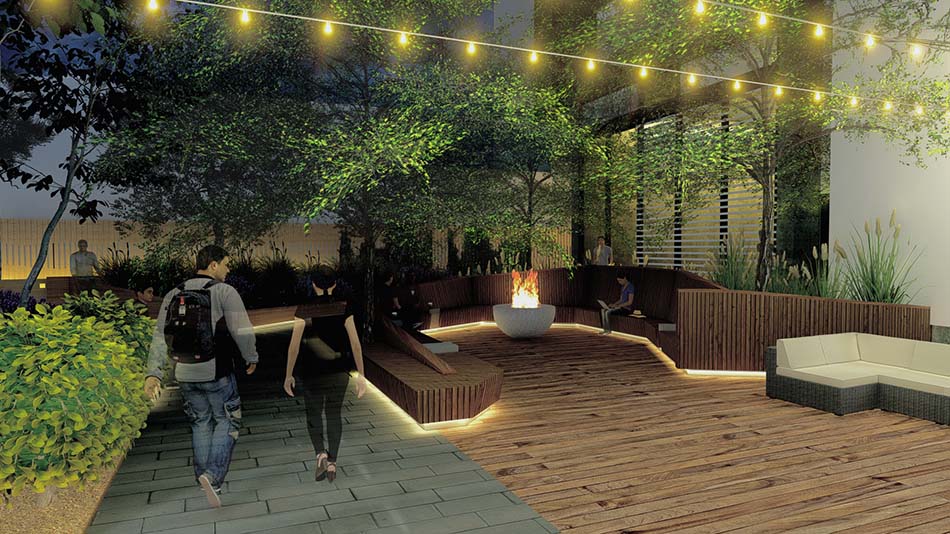

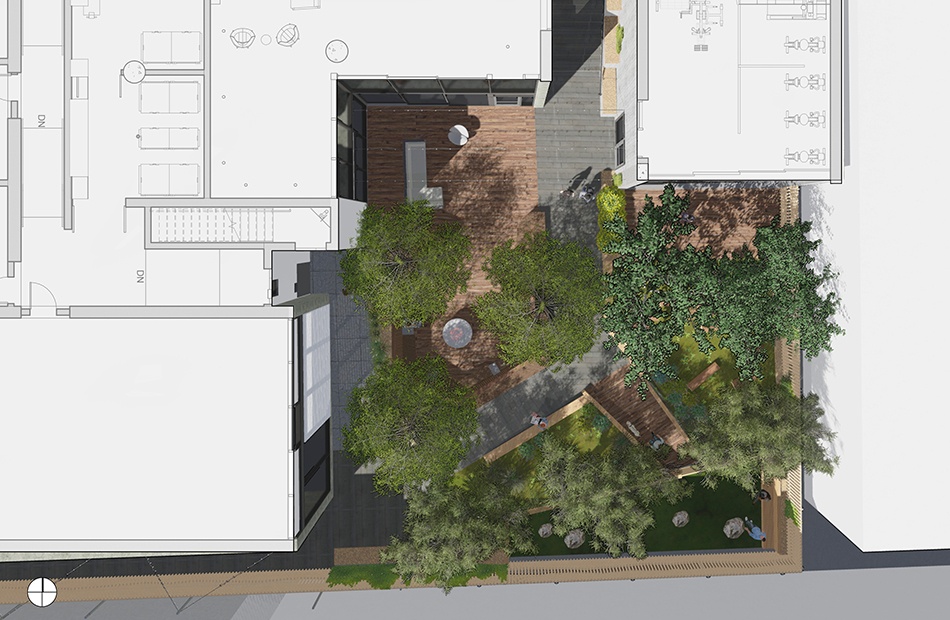
Location: California Street, San Francisco
Owner/Client: Michael Lee
Scope: Courtyard Space
Status: In Progress
Photography:
Baker Street Residence
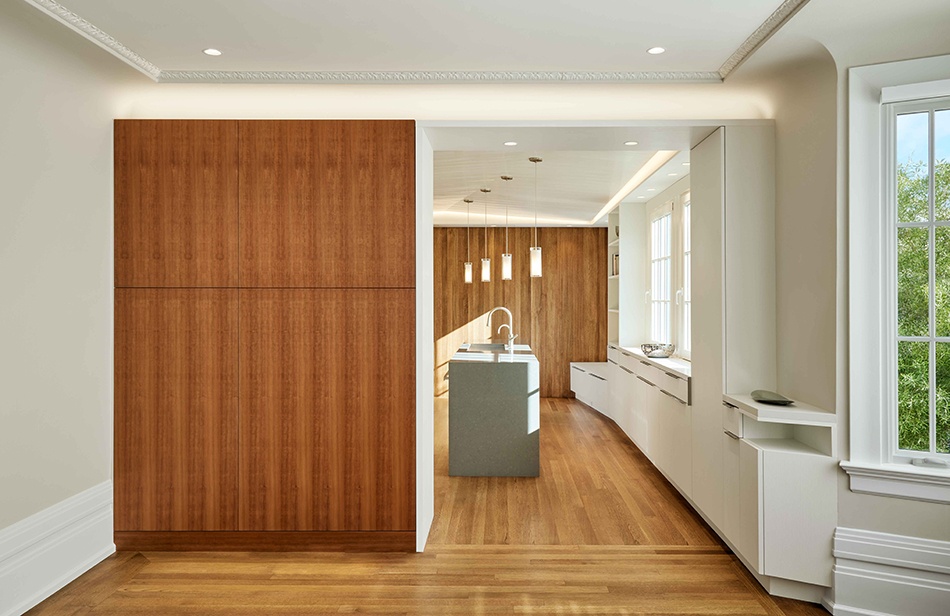
A New Realignment
This project located in the San Francisco Marina District near the Palace of Fine Arts has expanded from a modest renovation of the living space and kitchen to a more comprehensive revamp on two levels, creating a more integrated, modern, and functional living environment. The flow of the house is realigned to take advantage of this corner lot’s ample natural light and southern exposure. The kitchen becomes a warm social center with bleached woods, warm highlights, nooks, and cubbies for working and spending time together in this informal family-oriented space. Downstairs, the den, guest space, and storage are now clearly defined and better-organized in relation to utility areas and natural light. New glass walls and open circulation allow south light to penetrate deeply into the central areas of the home, breathing light into the renewed structure.
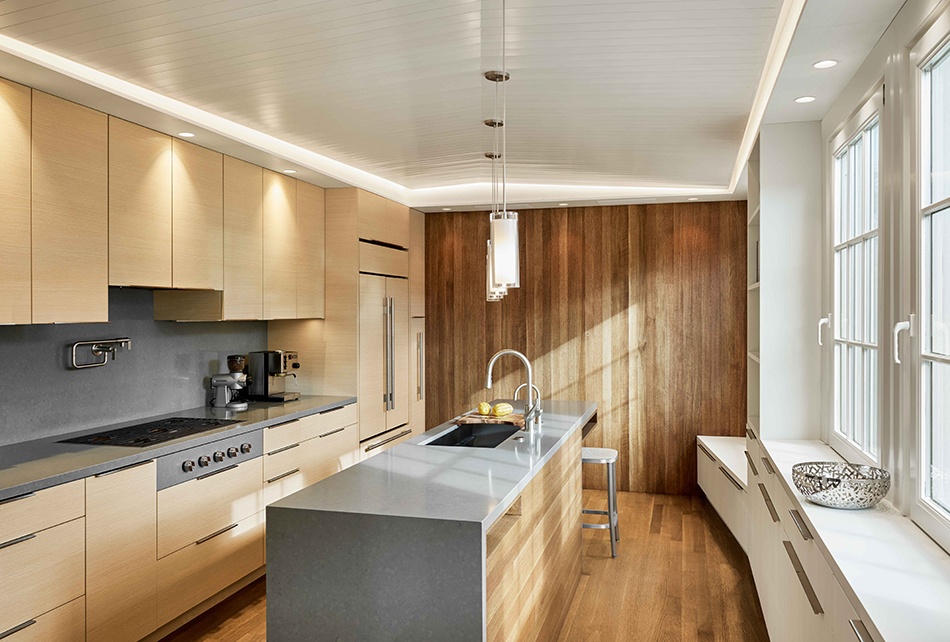
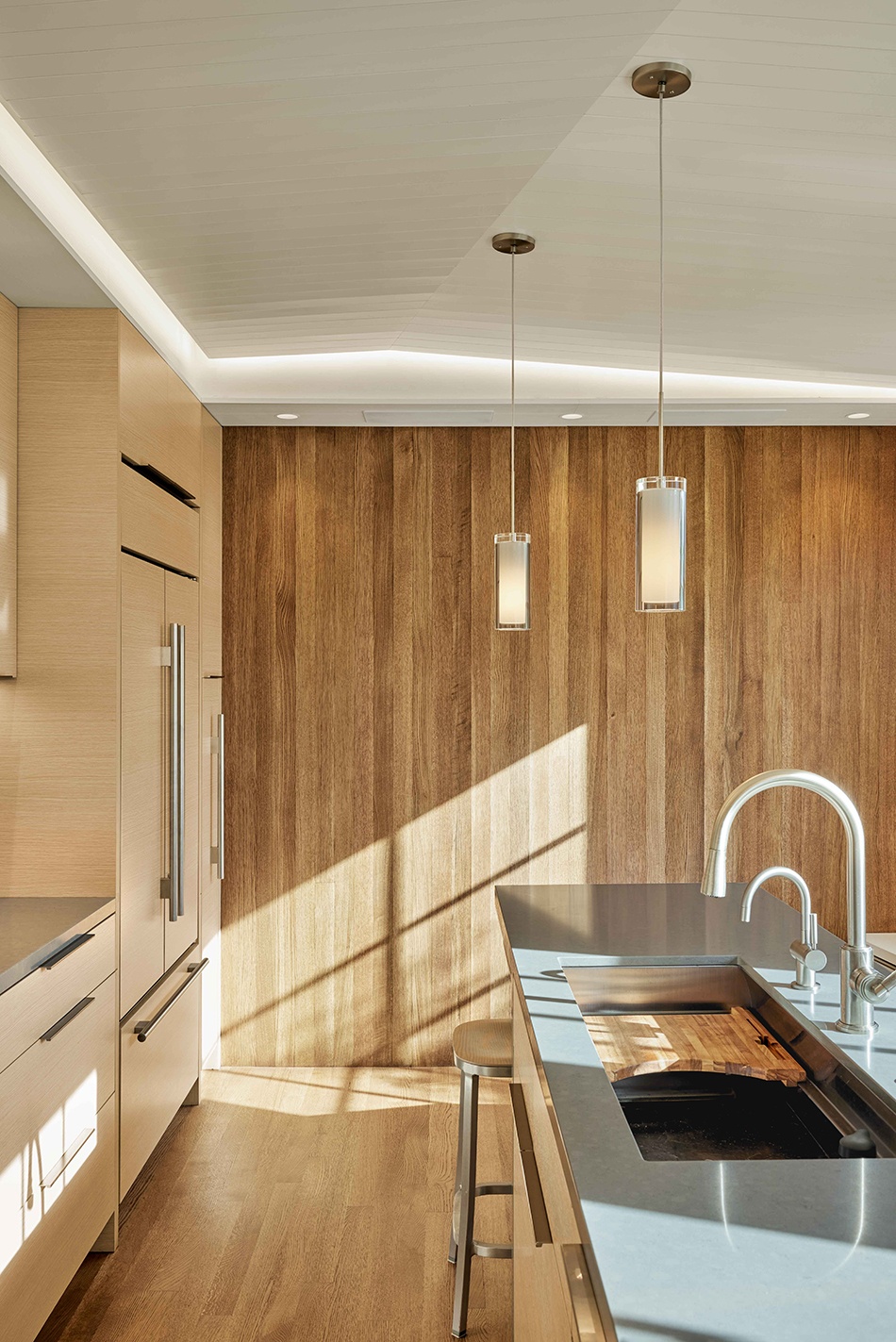
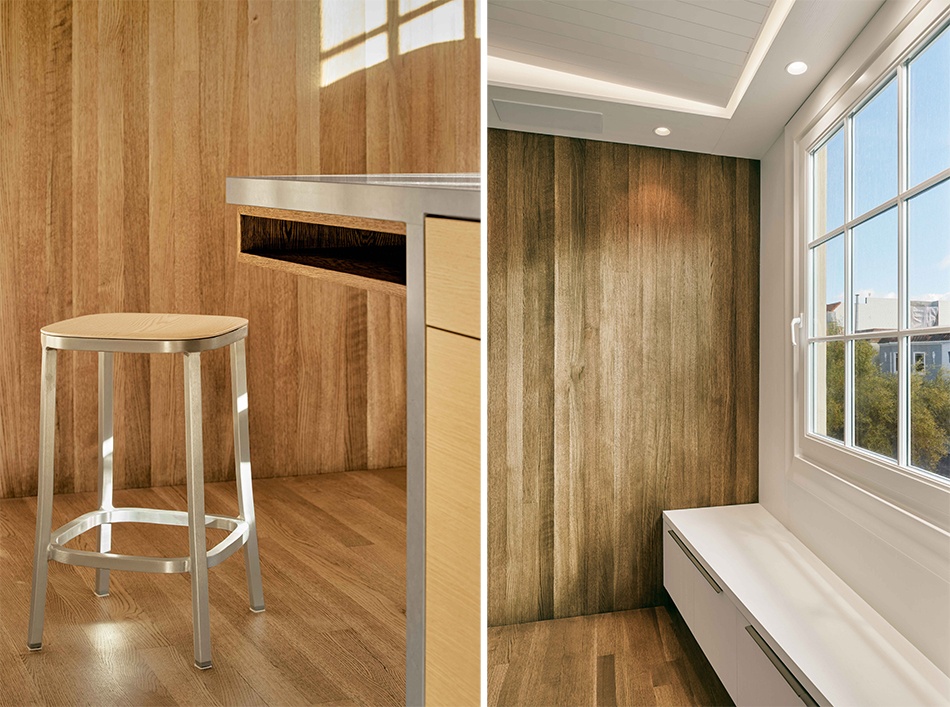
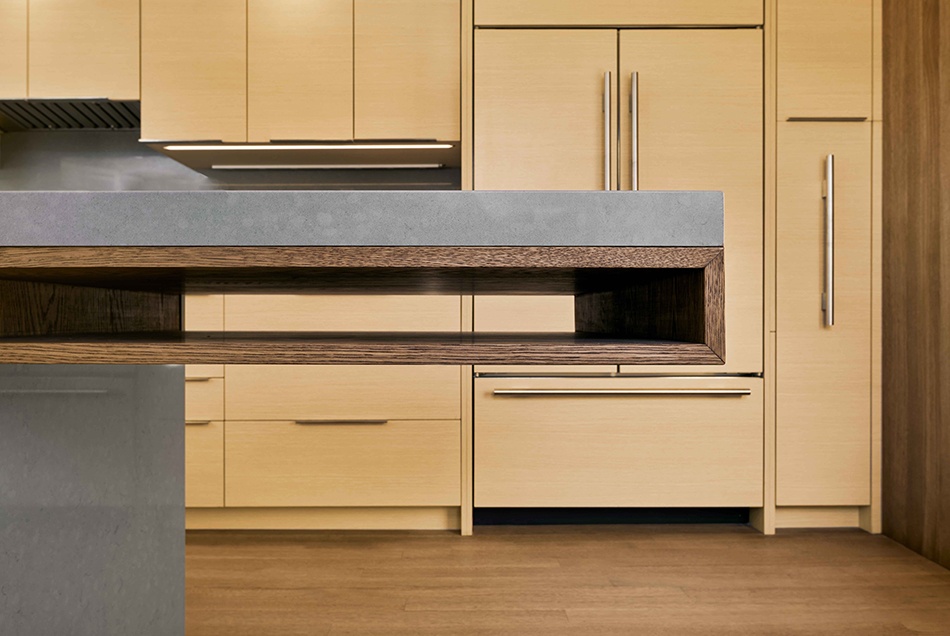
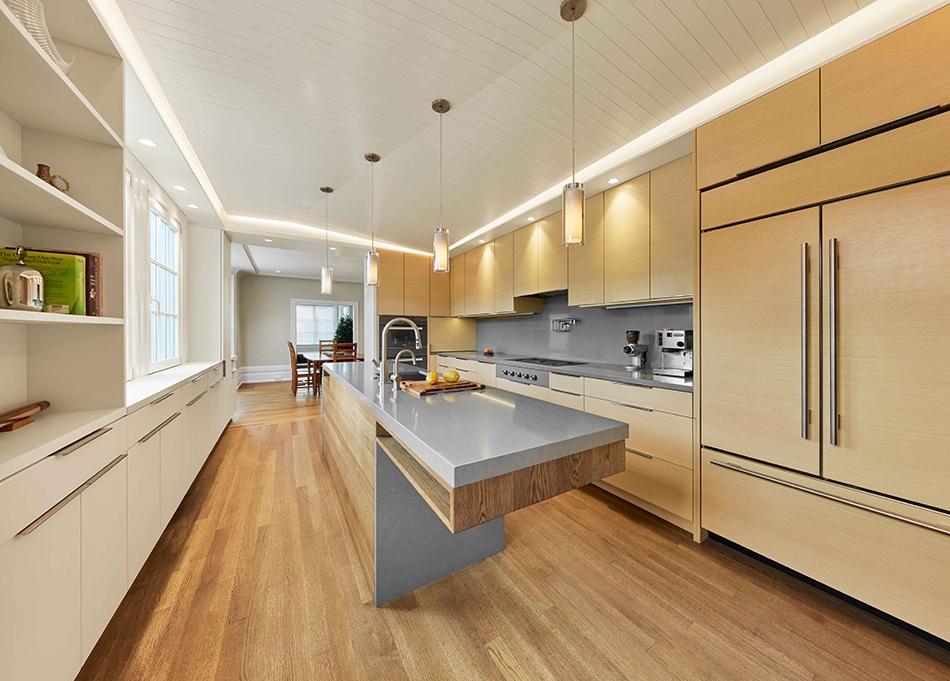
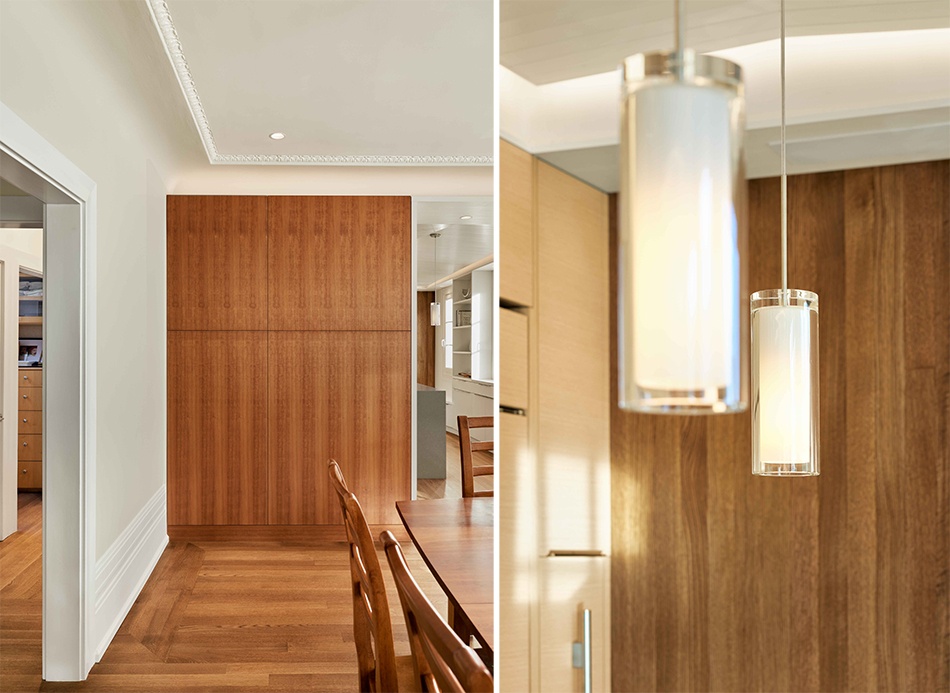
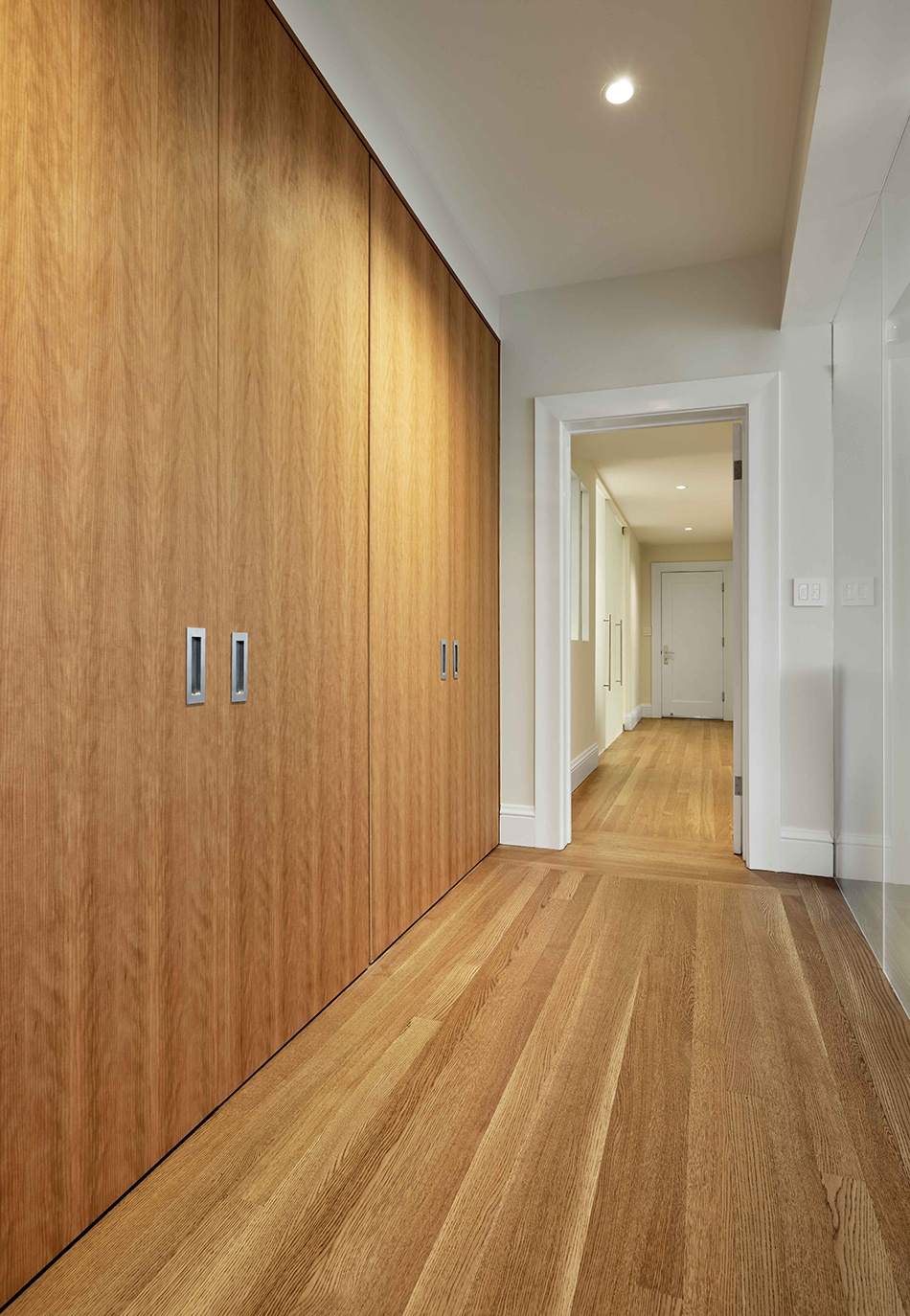
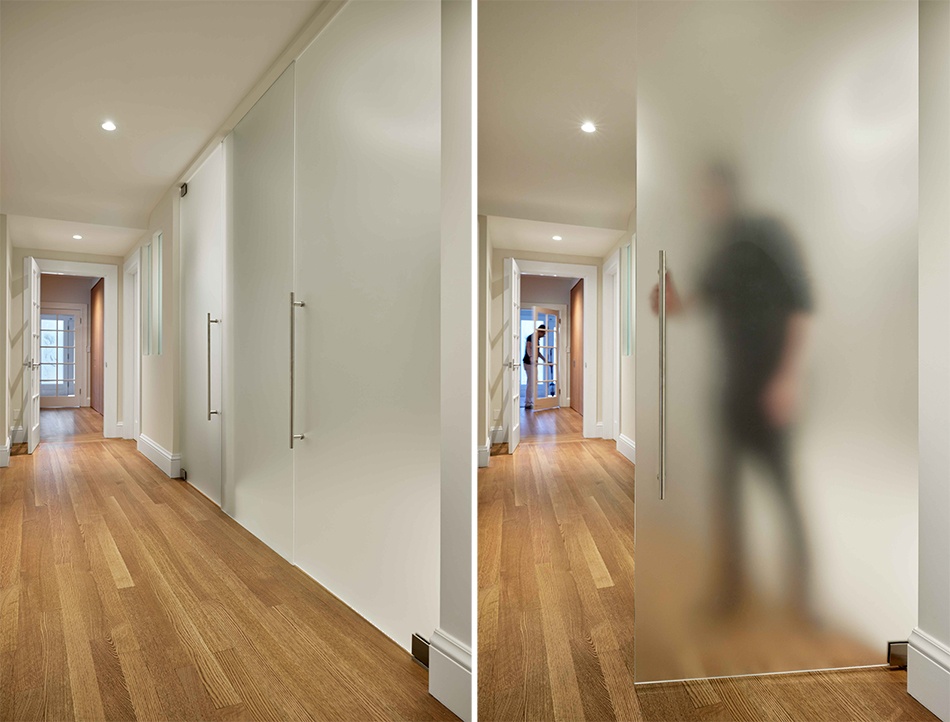
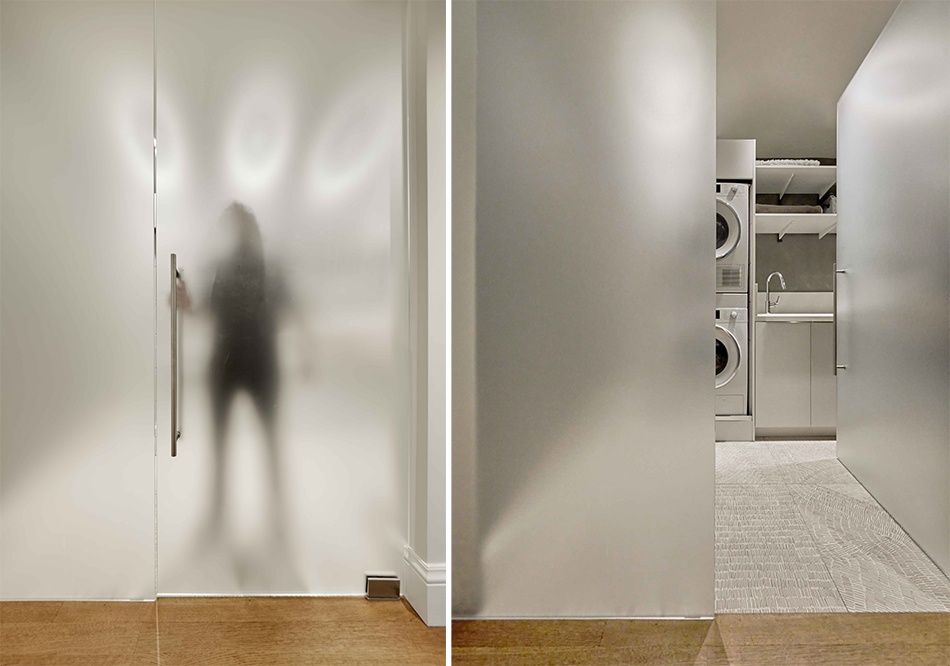
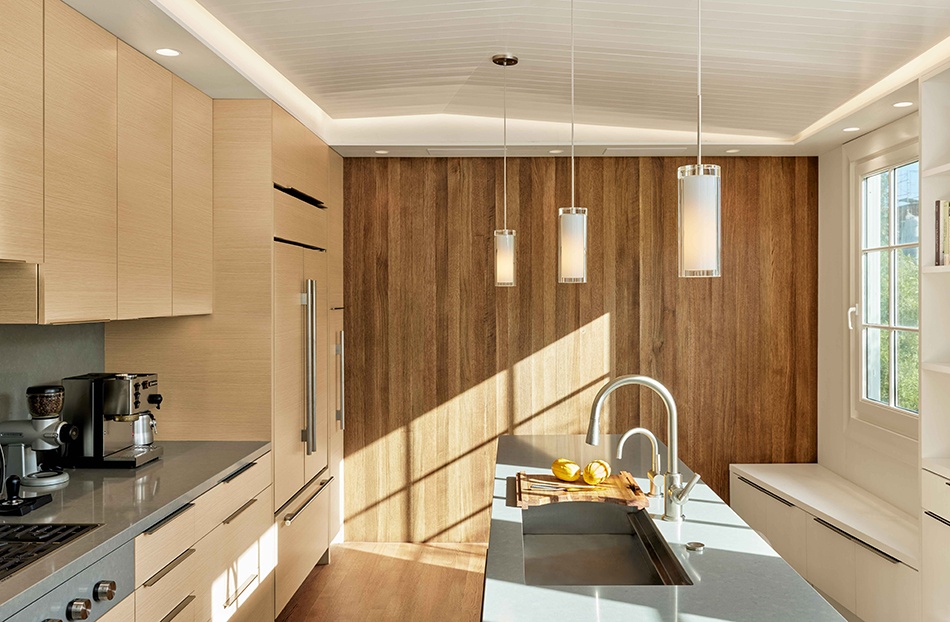
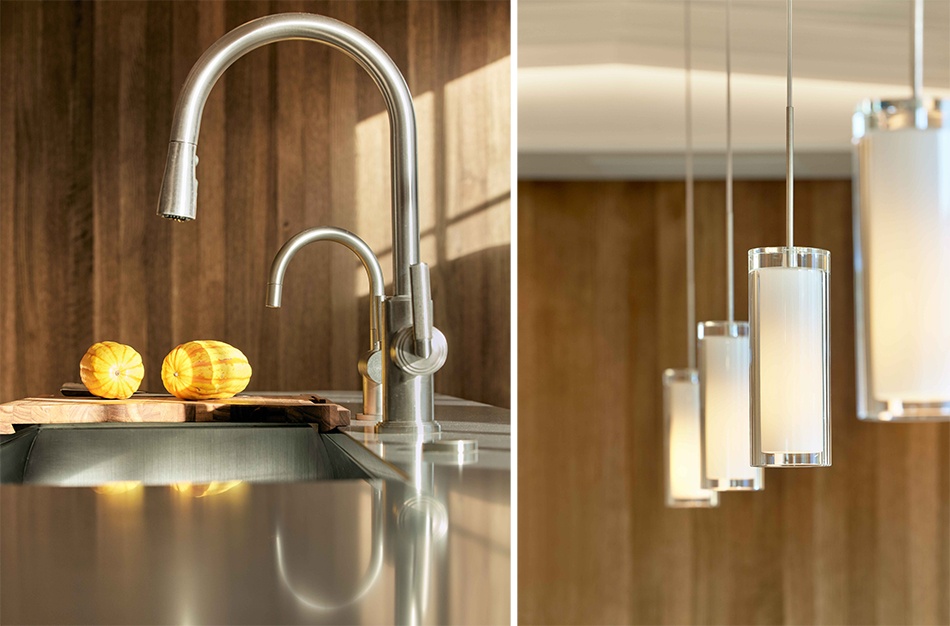
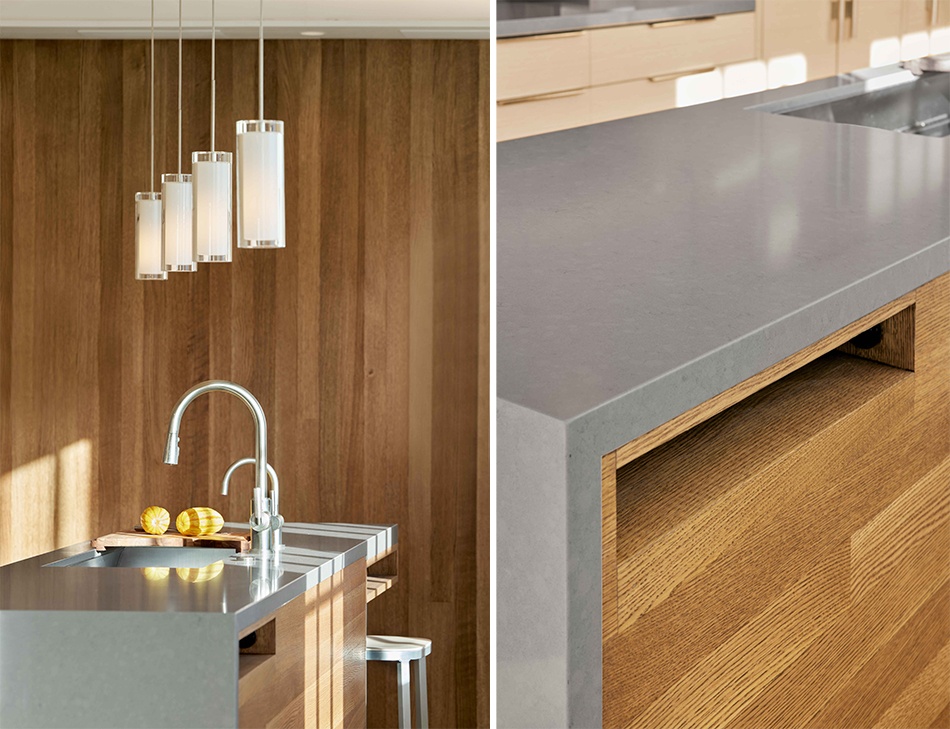
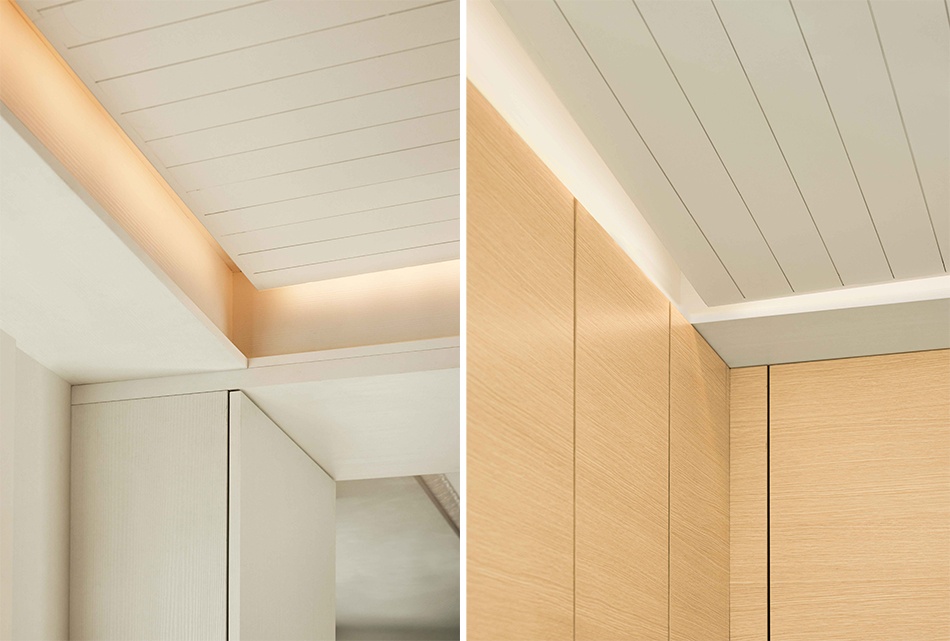
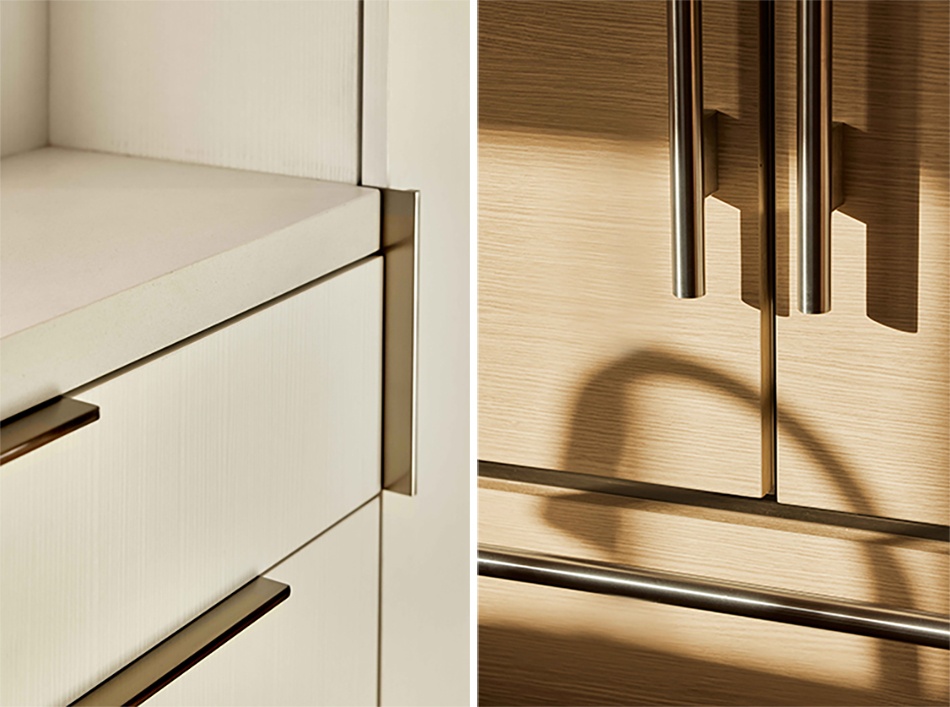
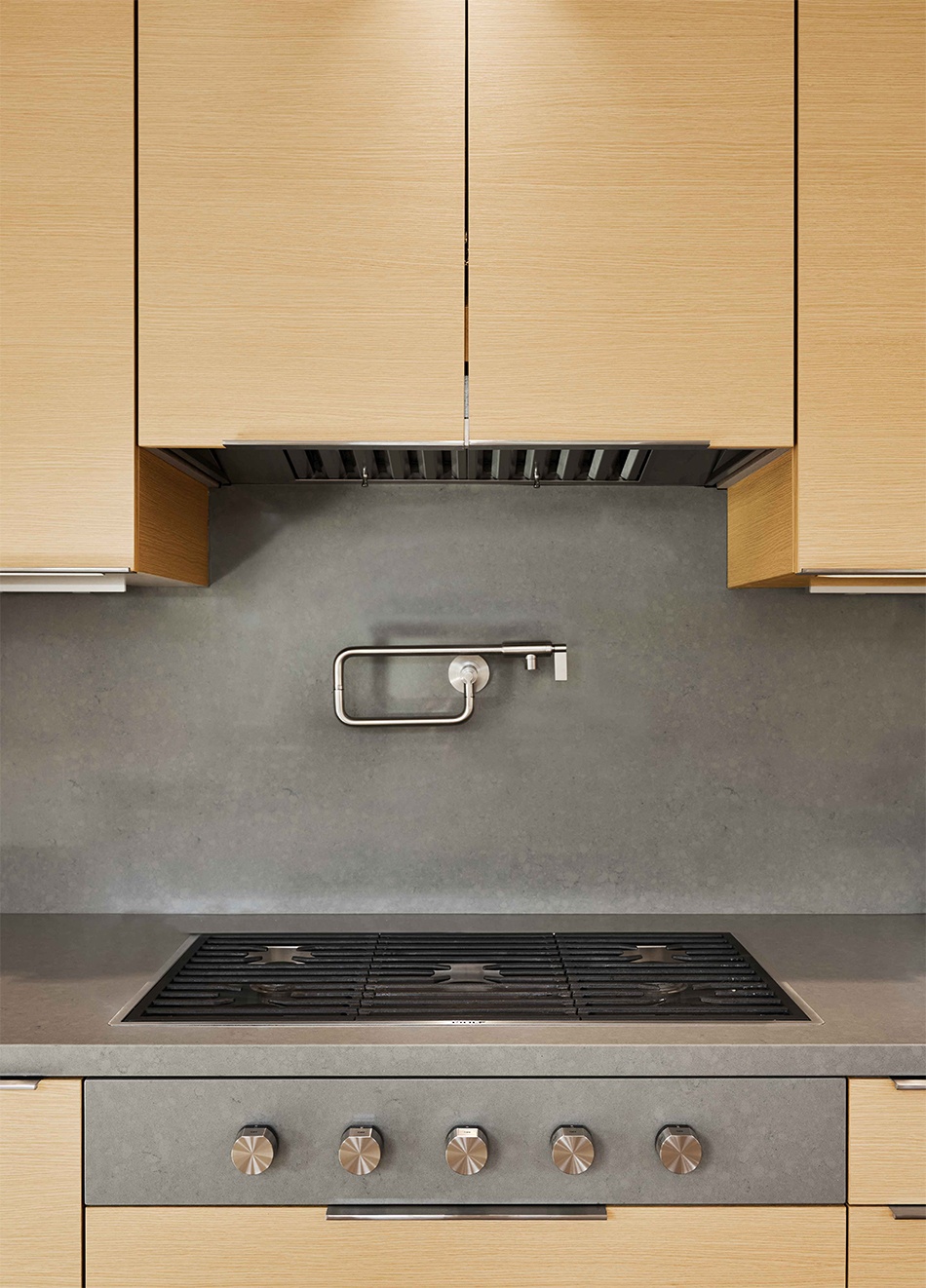
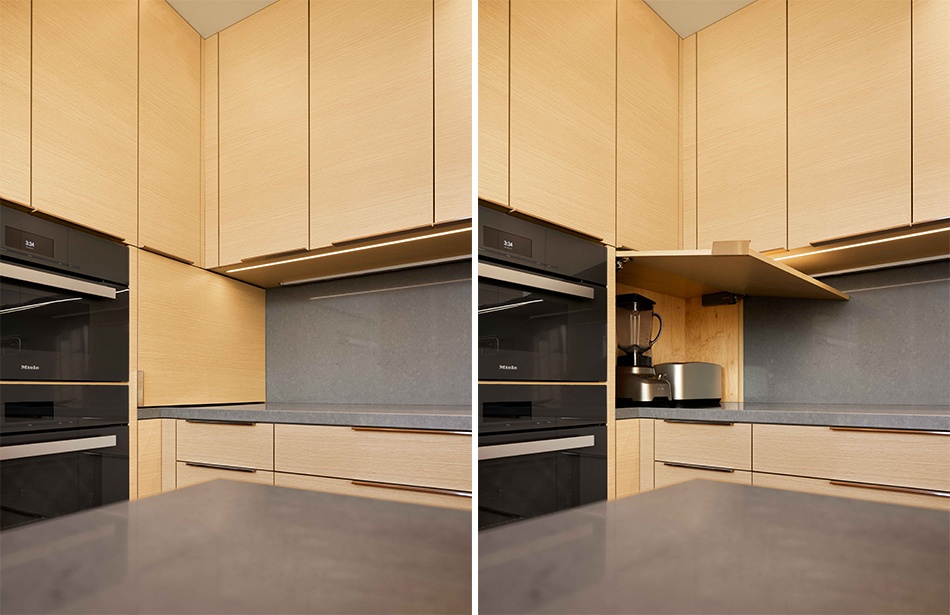
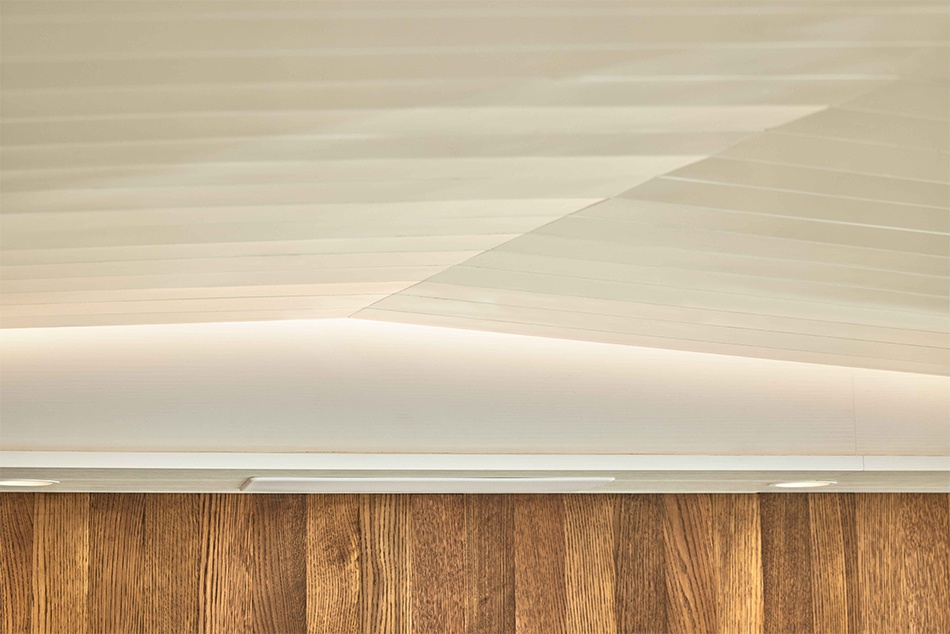
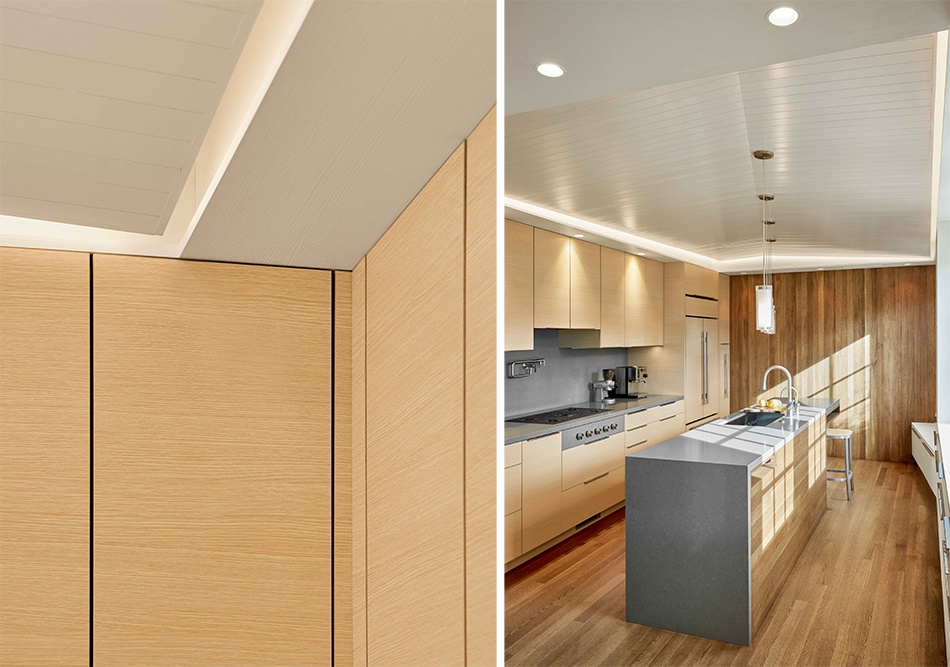
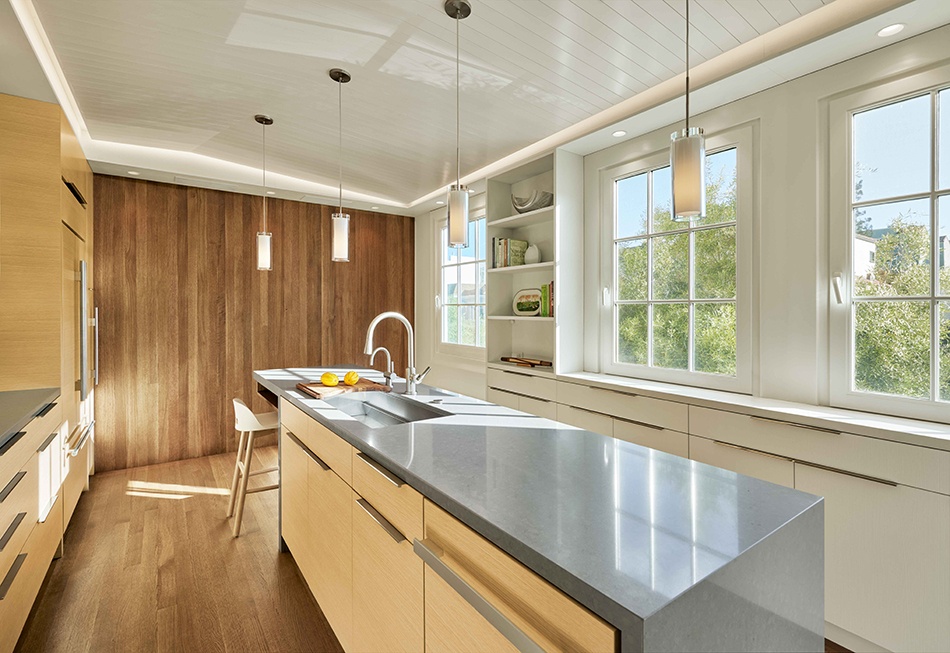
Location: Marina District, San Francisco
Owner/Client: Undisclosed
Scope: Residential Renovation
Status: Completed 2021
Photography: N/A
Candlewood Lake House
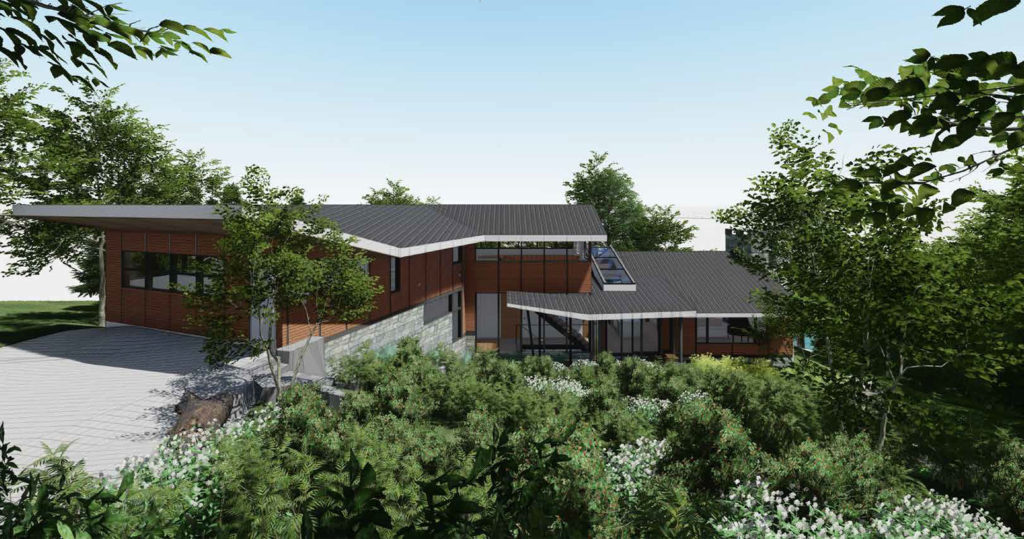
Reorienting a Home to Its Lake
Transforming a two-story summer home on a steeply sloped site over Candlewood Lake in New Milford, Connecticut, into a year-round primary residence meant expanding the home, while opening it up to capture more light and intensify its relationship with the seasonal spectacle of the lakefront. The resulting home merges dramatic interior living space with the landscape using local, authentic materials and carefully choreographed transparency to connect the lived experience of the house with the place that inspires and defines it.
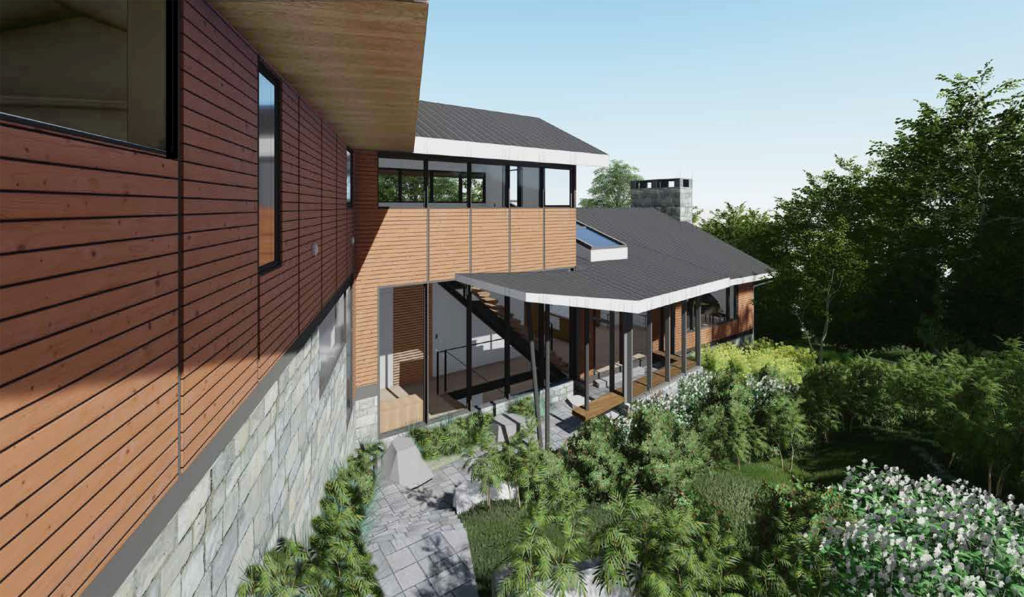
Lake Life
The existing home, built in the mid-20th century, was a modest self-contained gable structure, passively neutral to its spectacular surroundings and its privileged site. INTERSTICE Architects began from the premise that the home needed to be more than a house beside a lake—it needed to be a true expression of lakeside dwelling: it had to respond to its place in celebration of the rituals and daily experiences of New England lake life. Calling for an architecture that is in stronger dialogue with the exterior, the house needed to be more porous, yet protective, providing sweeping views both horizontally and vertically of its surroundings. From the upper canopy of the surrounding trees, down to the shoreline and the shimmering water below, the reimagined home engages the changing light, movement, and color of its setting.
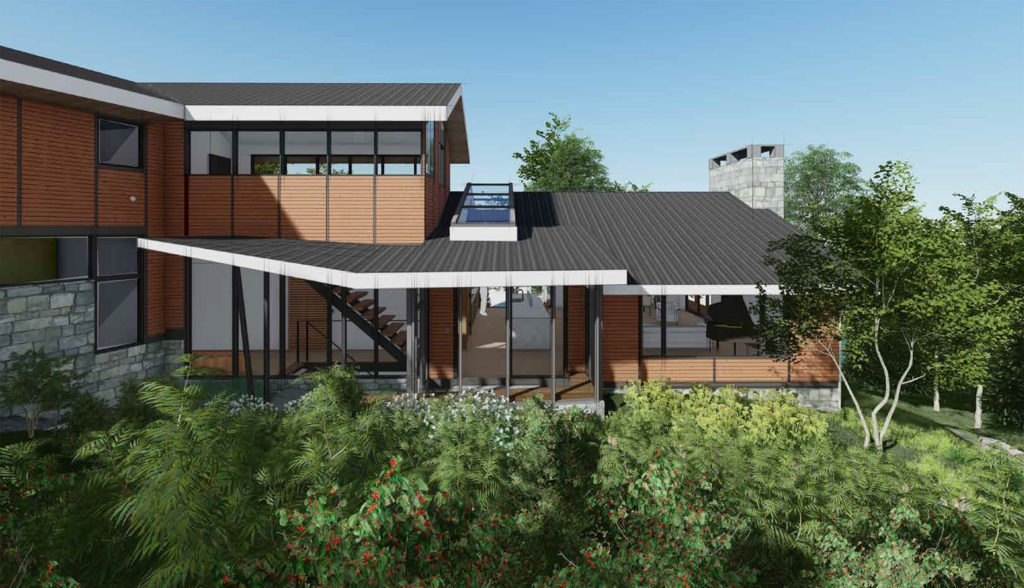
Exploring Ma
The layering and interweaving of space-time and becoming is best summed up in the Japanese spatial and temporal concept of ma. Guiding our design approach for the lake house spatial experience, this concept is demonstrated in the enfolding of interior space with the exterior world. The entry is where interior and exterior fuse and blur. This pivotal experience of the house orients the interior space and is a point of juxtaposition. A glass entry vestibule fans out from the main volume of the house, allowing the slope-side garden paving stones to flow seamlessly inwards at a slightly lower level than the main living spaces of the house. This gives the arrival experience a moment of pause and repose, between interior and exterior, before one steps up onto the warm hardwood floors of the home. Just within is the open stairway which occupies the transparent center of the home, an in-between space, that interconnects all three levels of the house, from office and studio lofts above, to the lower garden patio level facing the lake. The bright and social stairway allows light to penetrate deep into the structure.
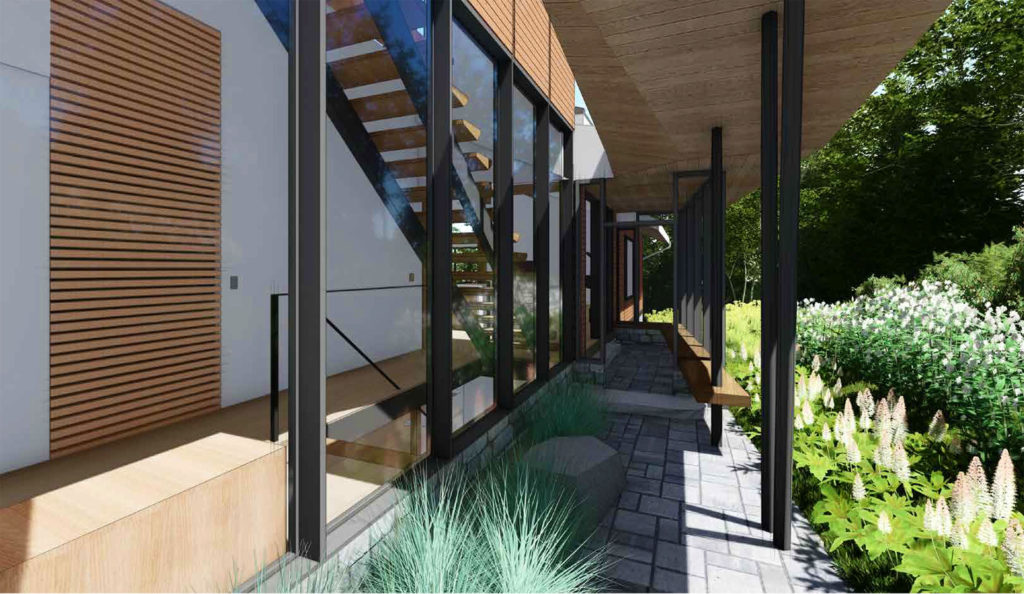
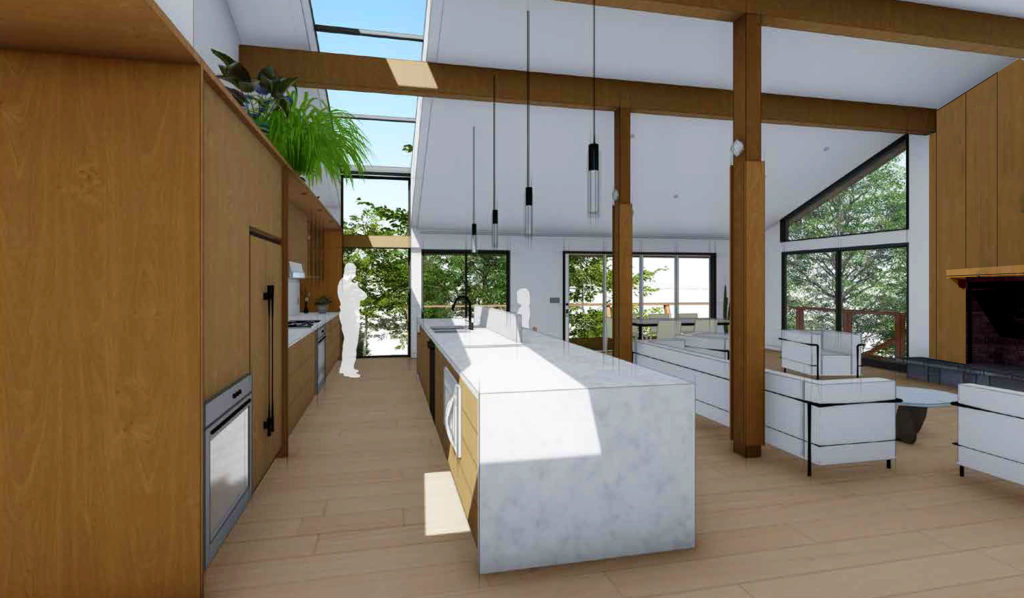
Lake and Sky
To “wake up and see only the lake and sky,” to always have a place to put everything away, and to experience the great reveal of the lake through the house, upon entry and “in every room,” were client aspirations expressed in the design brief. Walls that previously prevented the free flow of movement were removed, expanding spaces and merging volumes. New volumes are added to store vehicles, provide office space, and additional bedrooms, in a constant effort to reframe the lake and views to the forest landscape and garden. Roofs are lifted upwards in response to the slope, and the house is reconfigured so that volumes cascade down towards the shoreline. The main circulation is organized to be transparent to the landscape, allowing interior spaces to interact and connect along a central three-story space bathed in natural light.
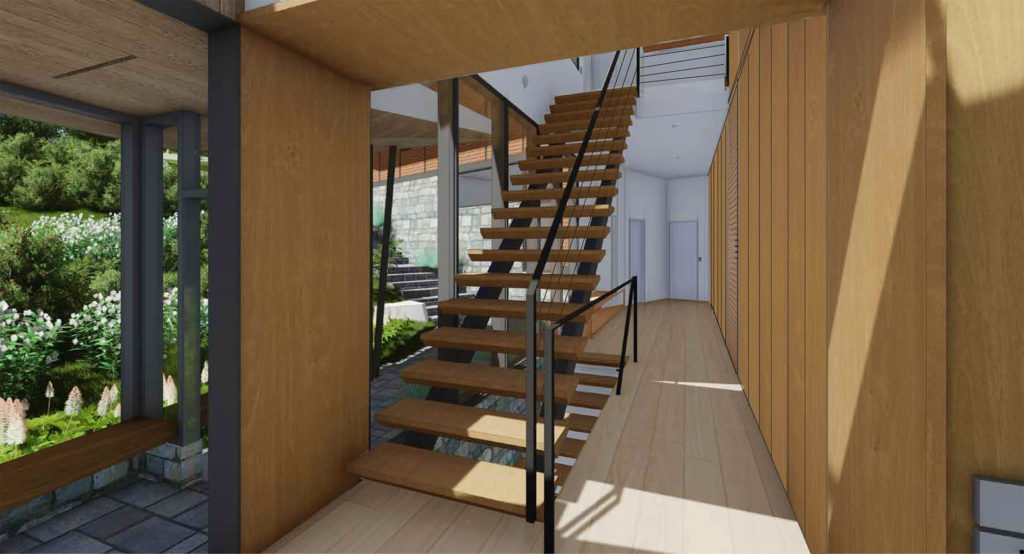
An Oasis Within
The master suite is designed to be an enclosed oasis within the house, a private sanctuary from guests at the heart of the home with ample closets, a private study, and a spacious bathroom. Glass and wood are used in floor to ceiling planes—a wall of glass facing southwest creates a uniquely intimate relationship with the lakefront and allows the bedroom sweeping views that descend to the lakeshore below, a year-round vista that changes seasonally.
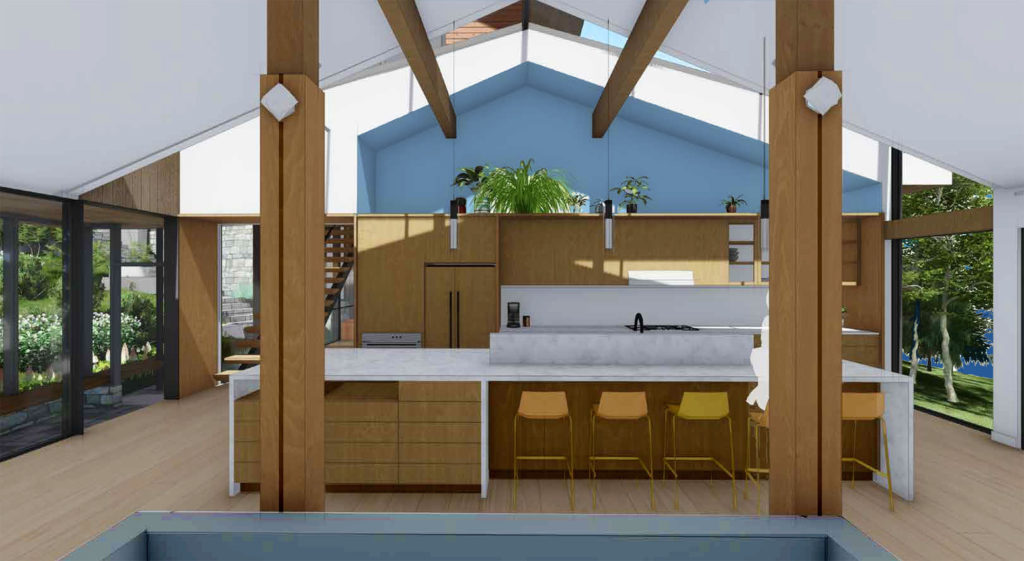
A Slice of Sky
A continuous ribbon of skylights unfurls from the entry vestibule over to the great room, across the open kitchen to descend toward the lakefront façade, two stories down to the lower patio. The slice of light provides a dramatic interior experience of the landscape, and the sun’s rays transect across these connected spaces. The great room, combining all social functions—cooking, dining, living—is unified by the clients’ extensive indoor greenery collection displayed and fostered within the new open and naturally-lit space.
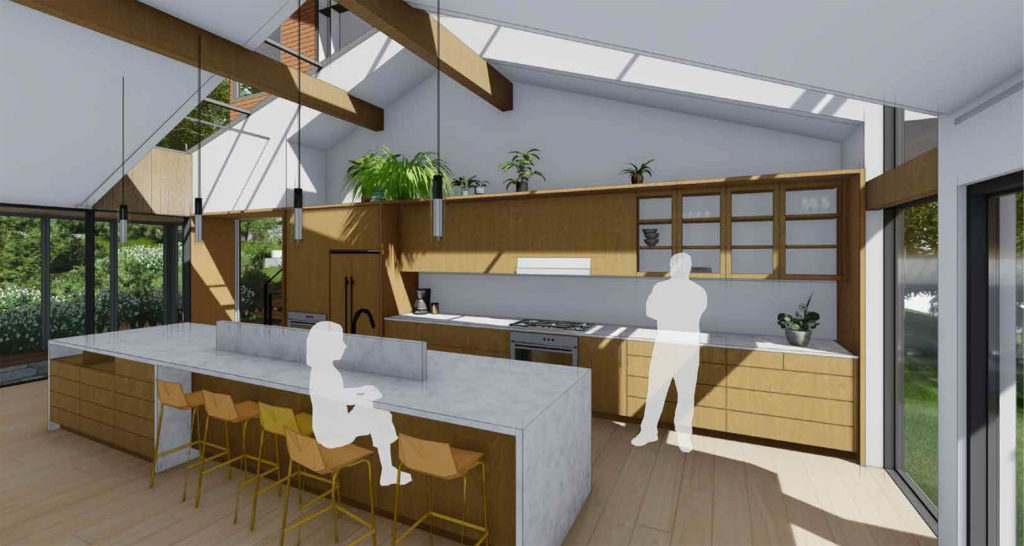

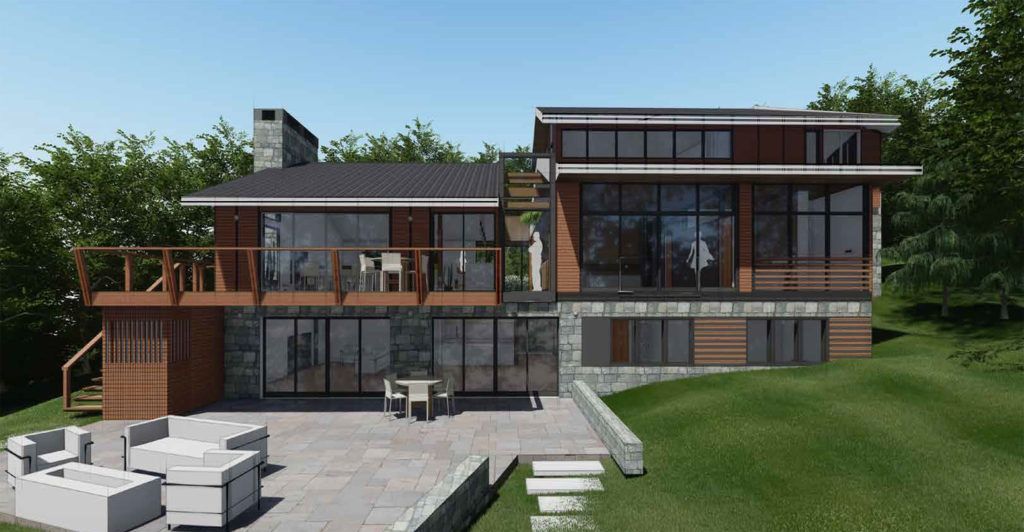
Location: New Milford, Connecticut
Owner/Client: Undisclosed
Scope: Residential Renovation
Status: In Progress
Photography: N/A
NANO:Condo
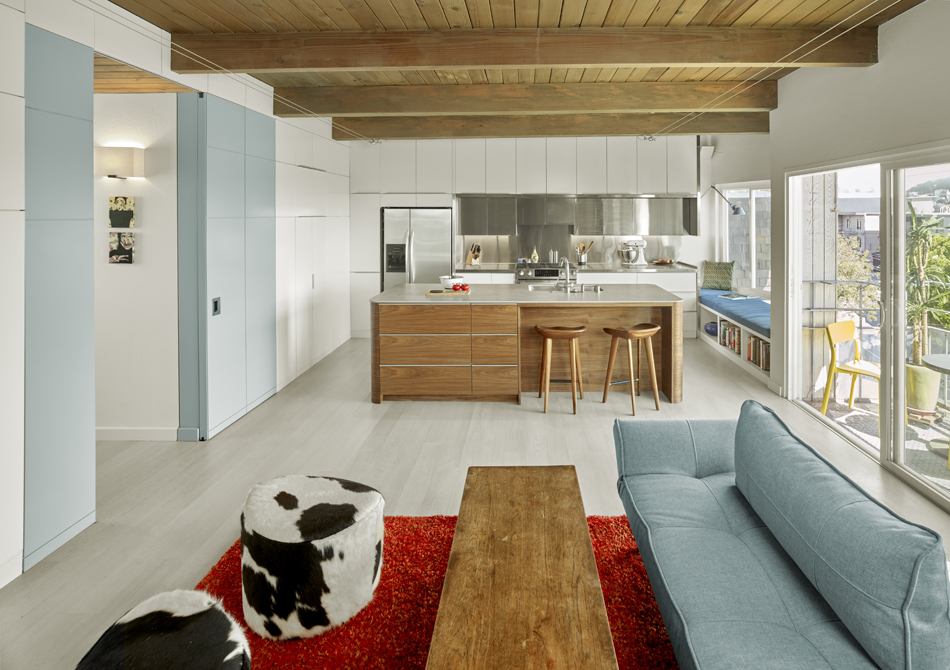
Room to Grow
Located in the Eureka Valley neighborhood of San Francisco, this tiny, second floor 900-square-foot condominium boasts expansive views of the city. A family of four needed to transform their home from a cramped 2-bedroom apartment to a spacious home that could accommodate its growing children and overnight guests, as well as for entertaining. The complete overhaul of the unit’s interior created a great room overlooking the San Francisco Bay, along with a more dynamic space meant to accommodate the family’s lifestyle.
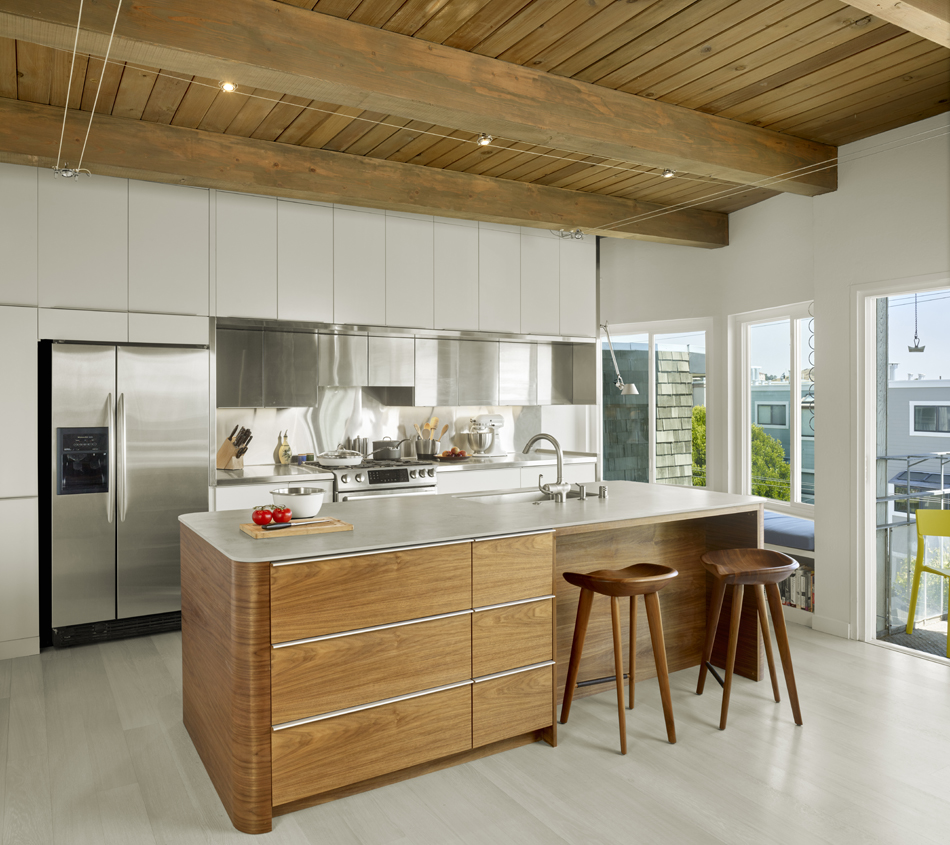
Inspiration from the Abstract
The kitchen, dining, and living areas were joined with a dynamic cabinetry smart-wall, which morphs into a sort of storage dove-cot closet and secret treehouse with a lofted, fourth bedroom for guests. A favorite Wayne Thiebaud painting became the inspiration for the abstract, felted entry enclosure. Existing wood ceilings were exposed and preserved, unifying the interiors of the now 4-bedroom, high performance micro-condominium.
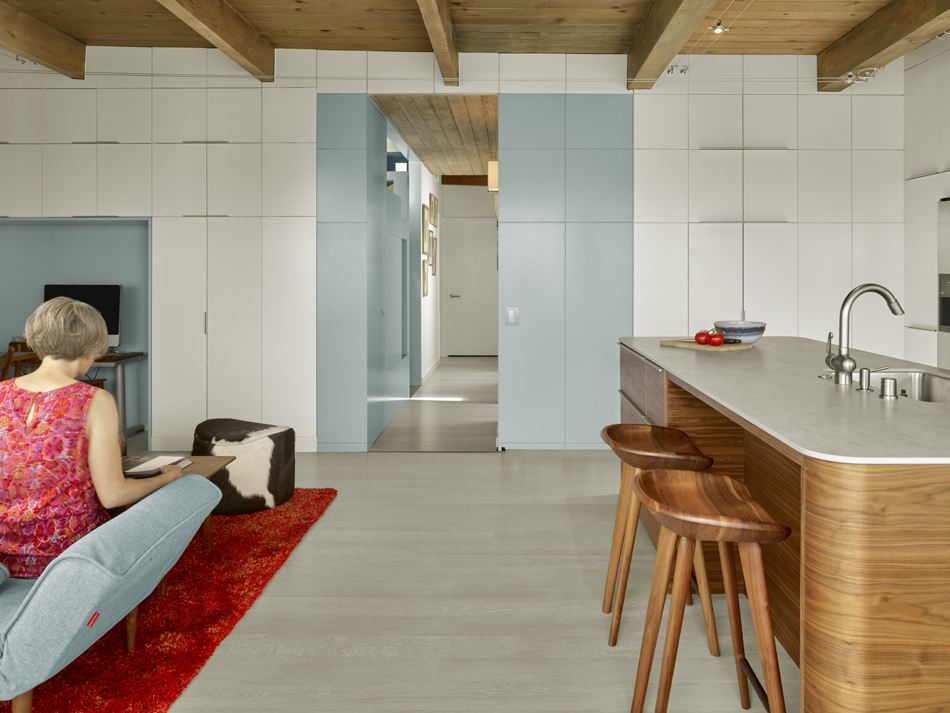
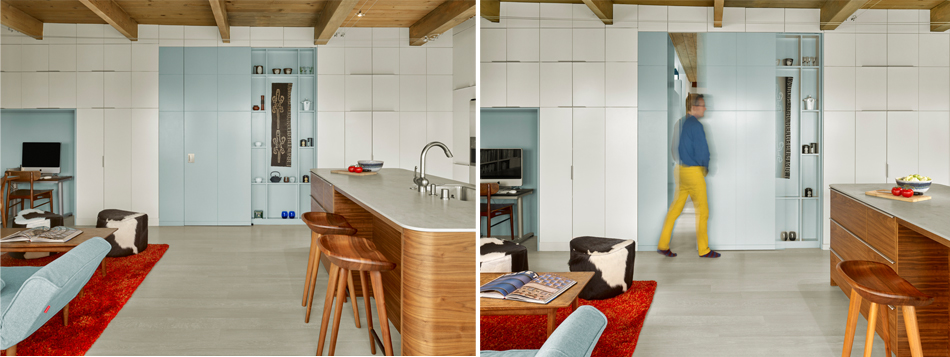
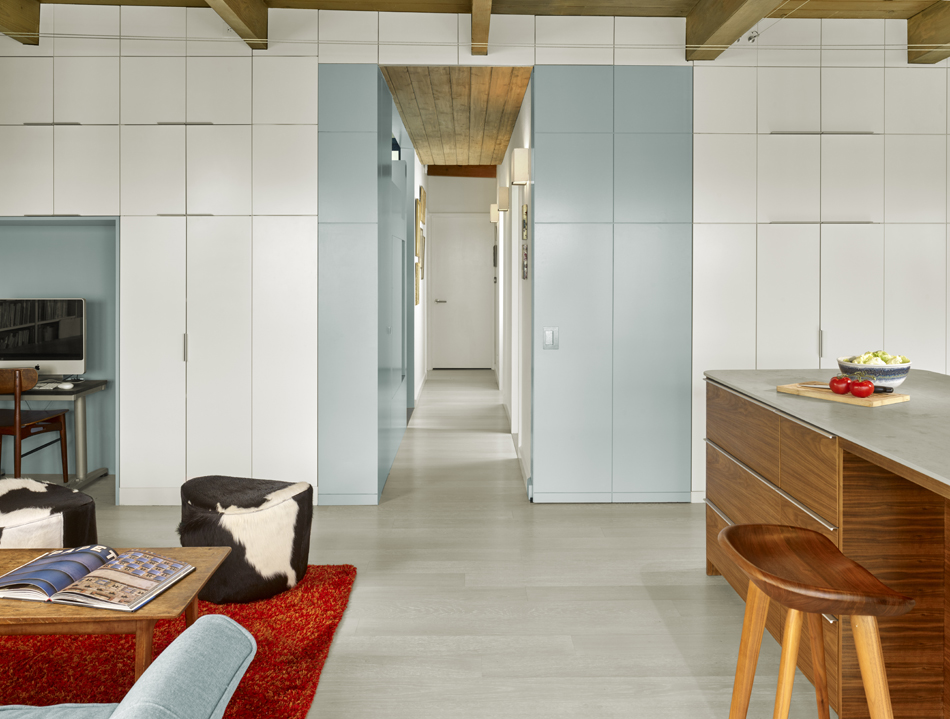


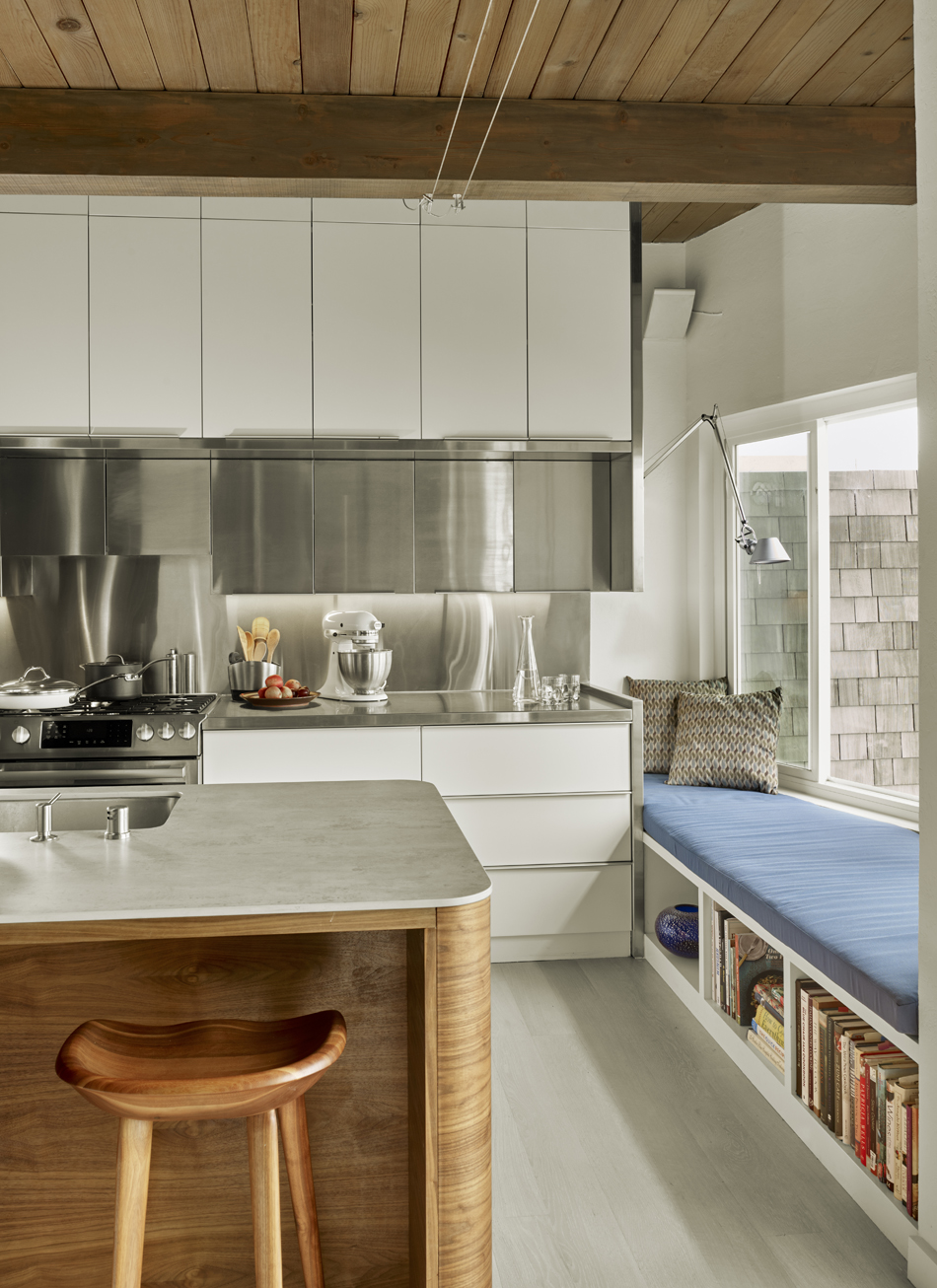
Division for More
The single, central core of the NANO:Condo was deftly partitioned with sliding walls to create three partial bathrooms: a powder room, a shared half-bath, and master bathroom all in one with access from a master suite. A single larger bedroom was divided into two children’s bedrooms with counter-weighted beds that slide up and easily disappear into the ceilings to make room for desks, bookshelves, and play.
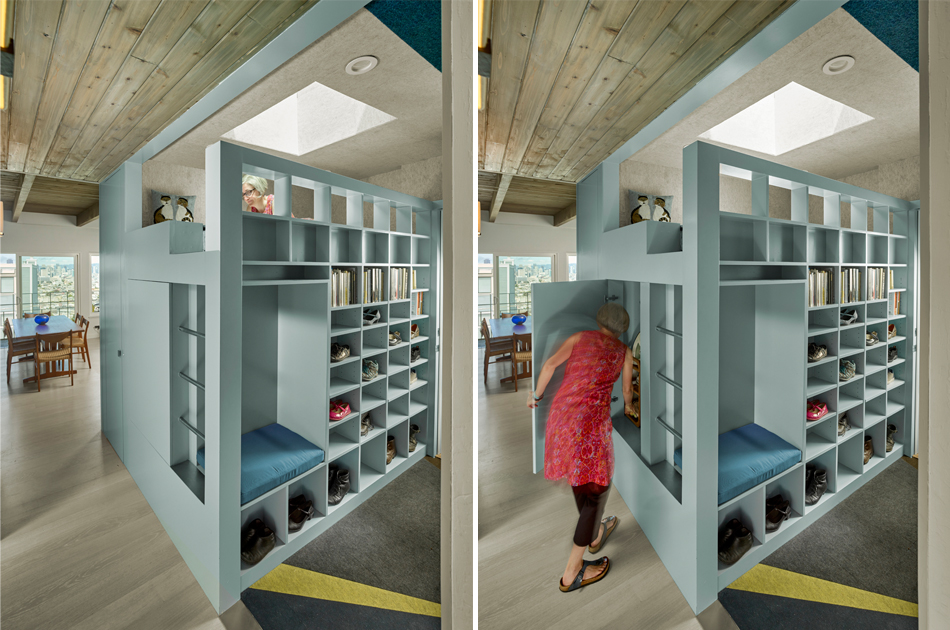
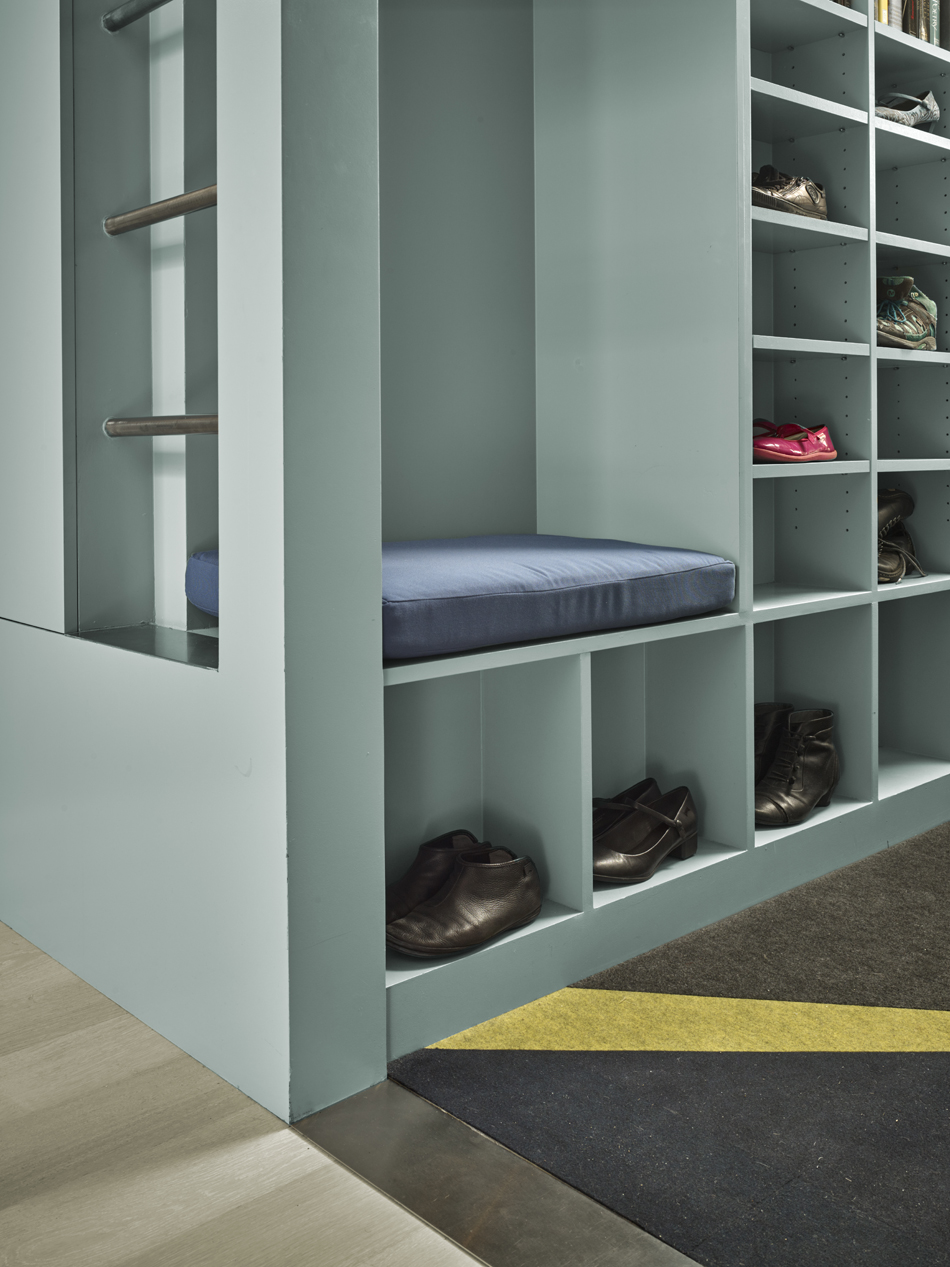
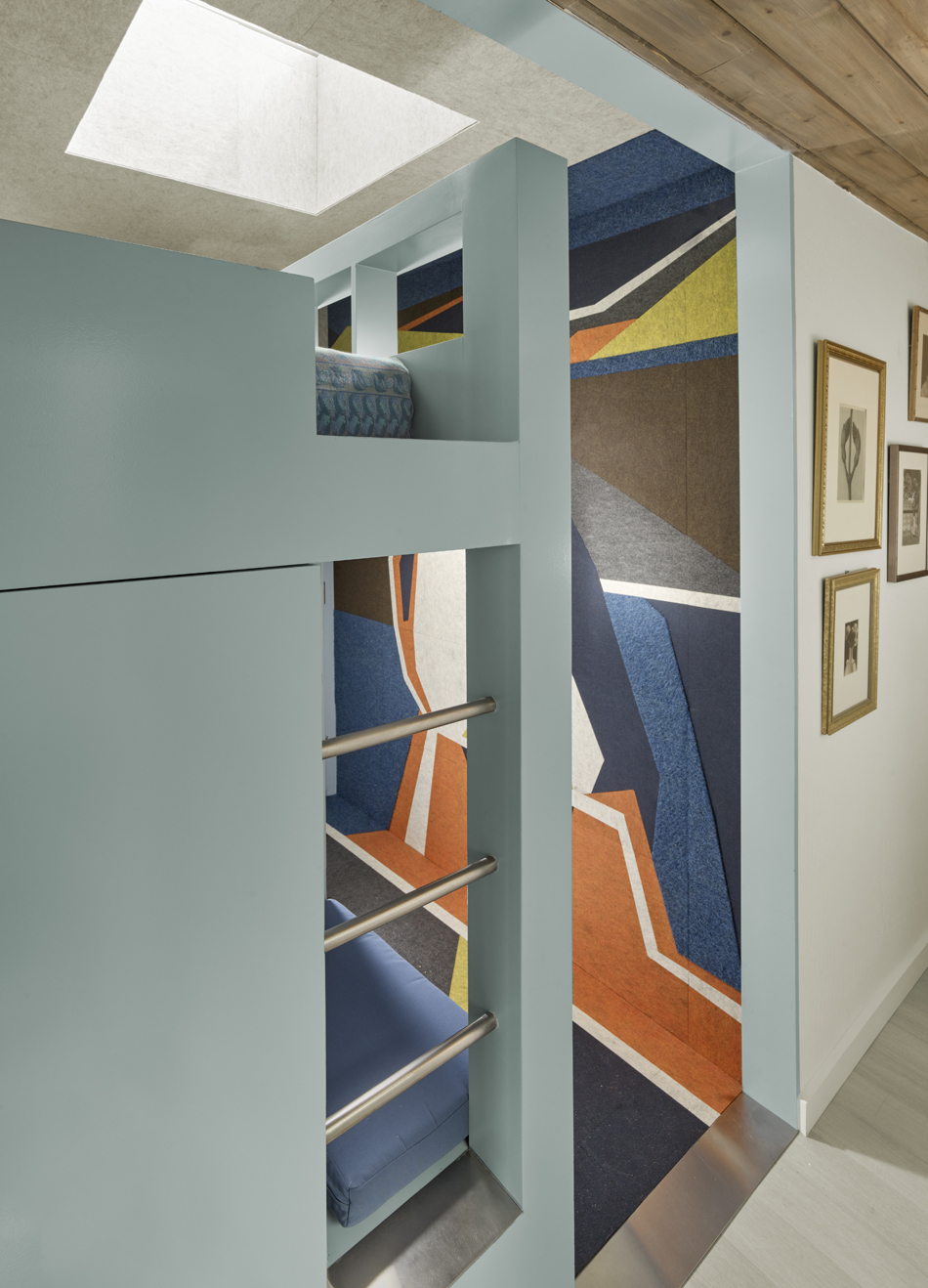
Cubbies and Nooks
With the condo’s limited square footage, storage was found in custom cabinetry solutions where dividers function in a variety of ways—from shoe racks to play lofts, homework cubbies and reading nooks—which permeate all rooms. Wardrobe modules temporarily divide spaces into private areas and then slide away to allow the family to come together again.
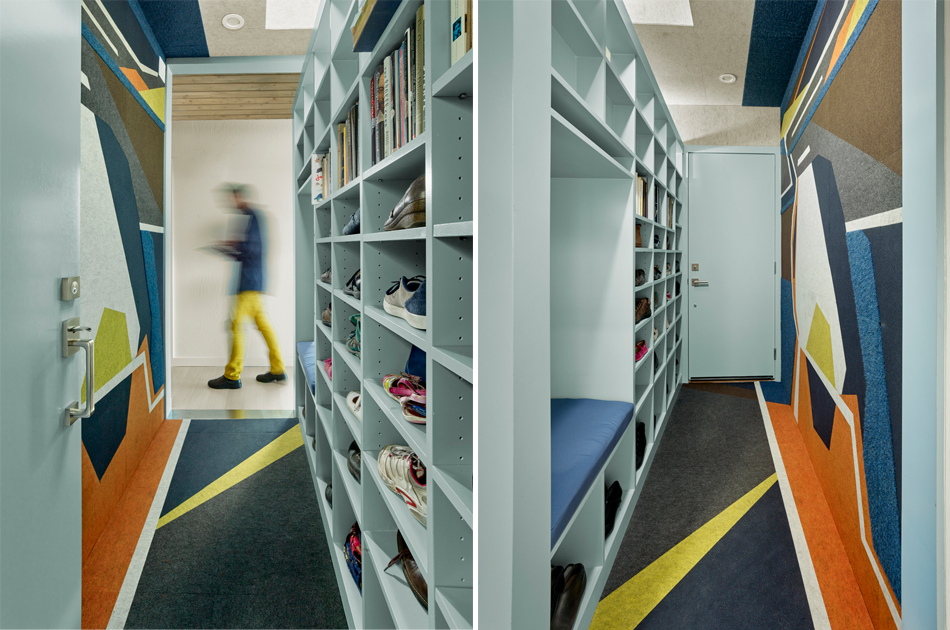
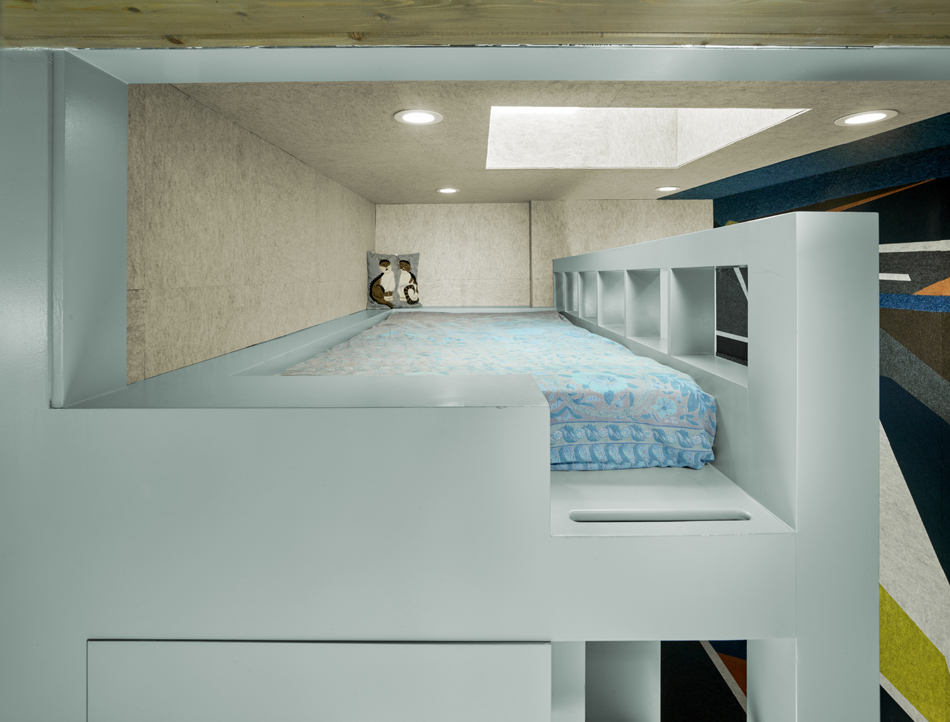
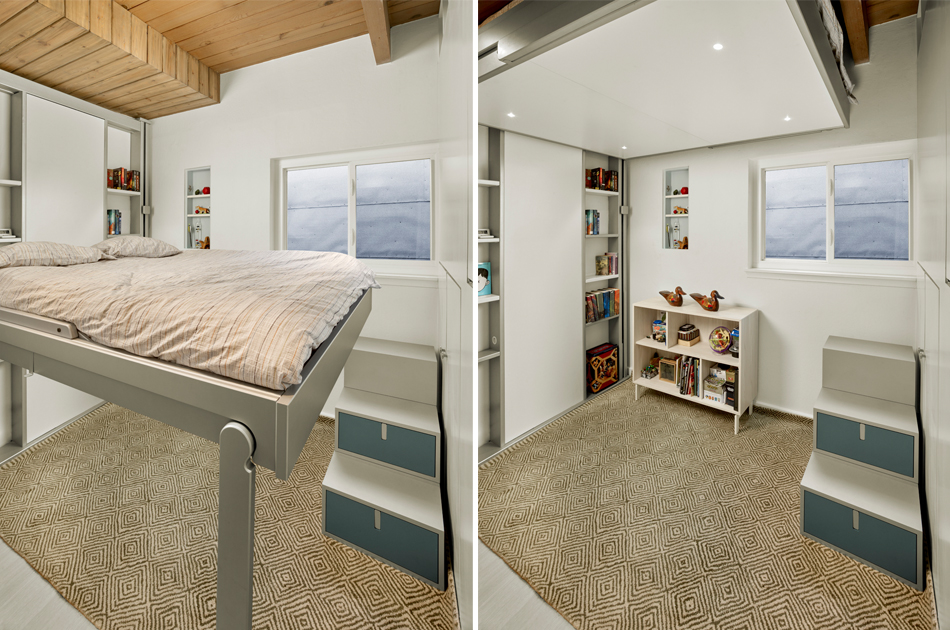
Location: Eureka Valley, San Francisco
Owner/Client: Undisclosed
Scope: Interior Renovation
Status: Completed 2016
Photography: Cesar Rubio






